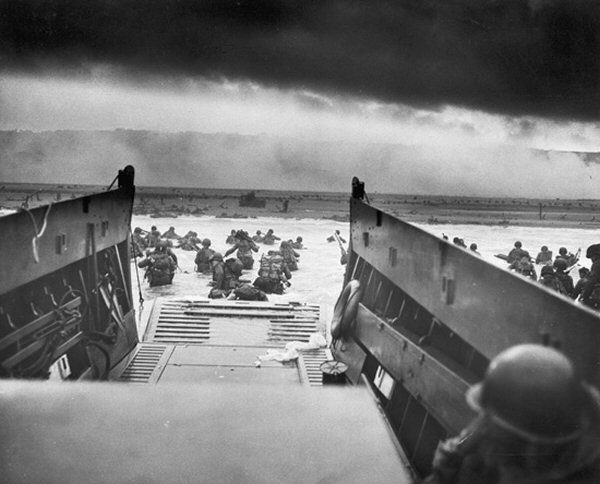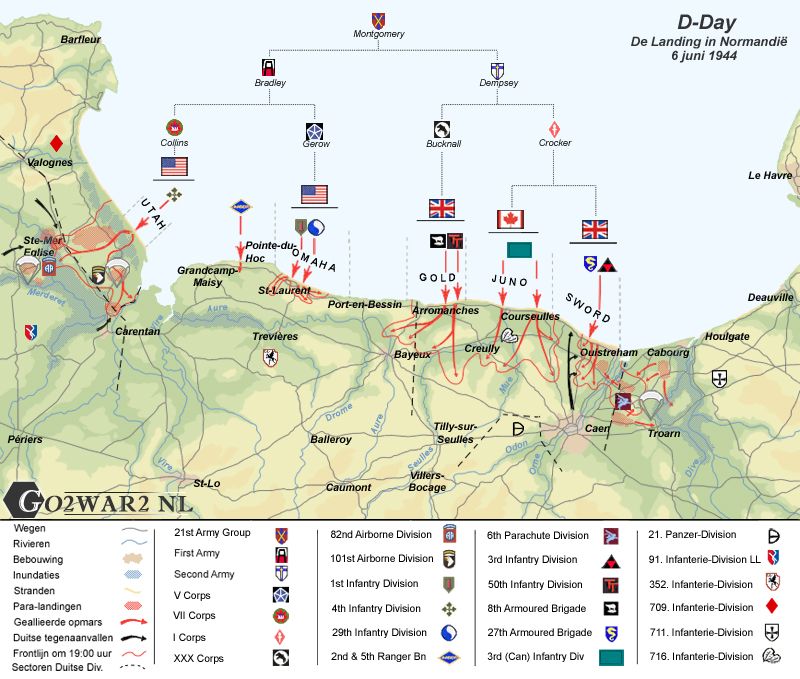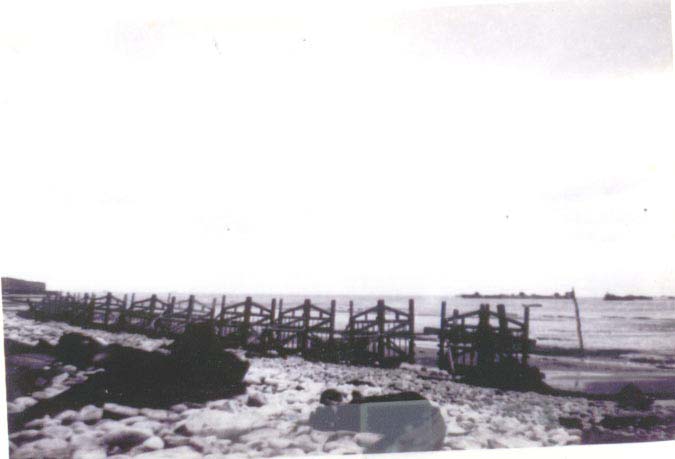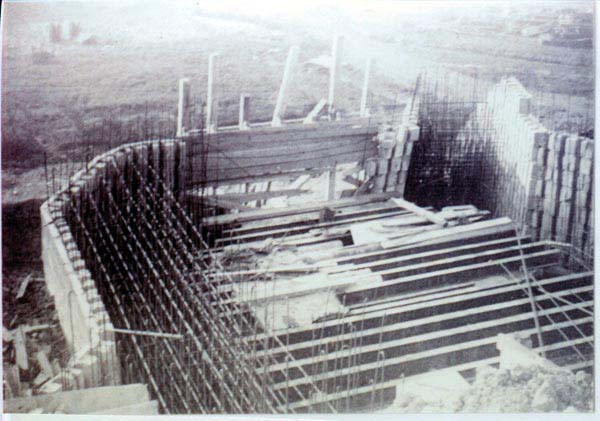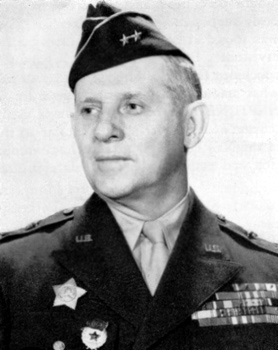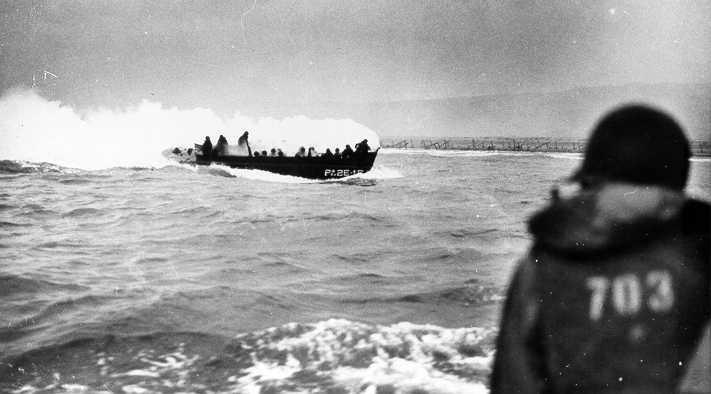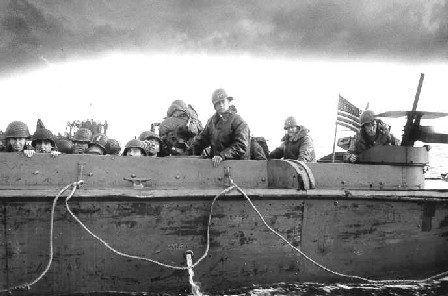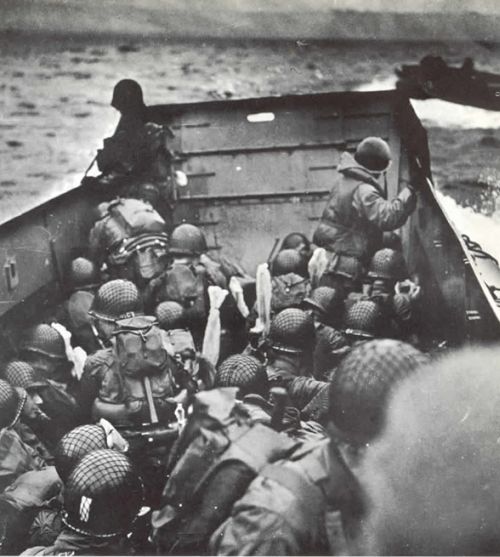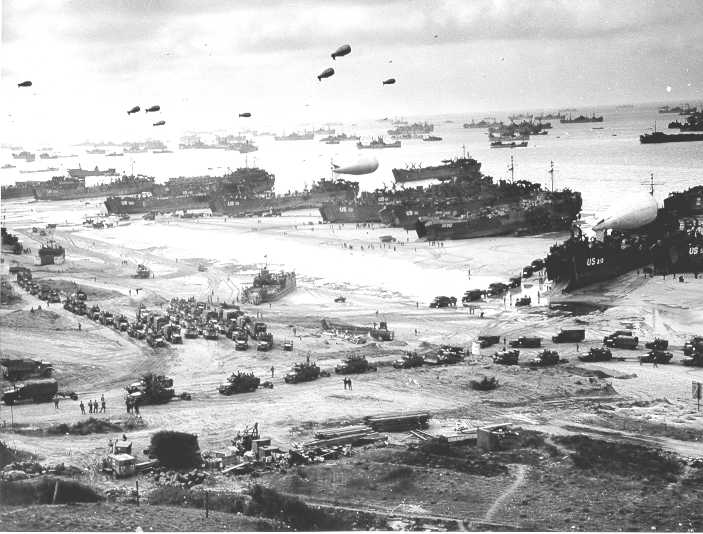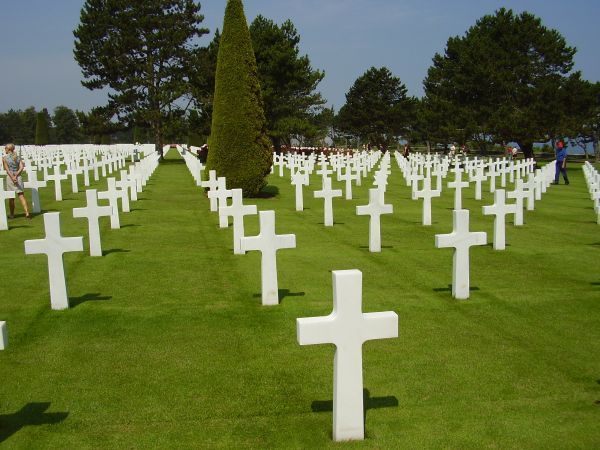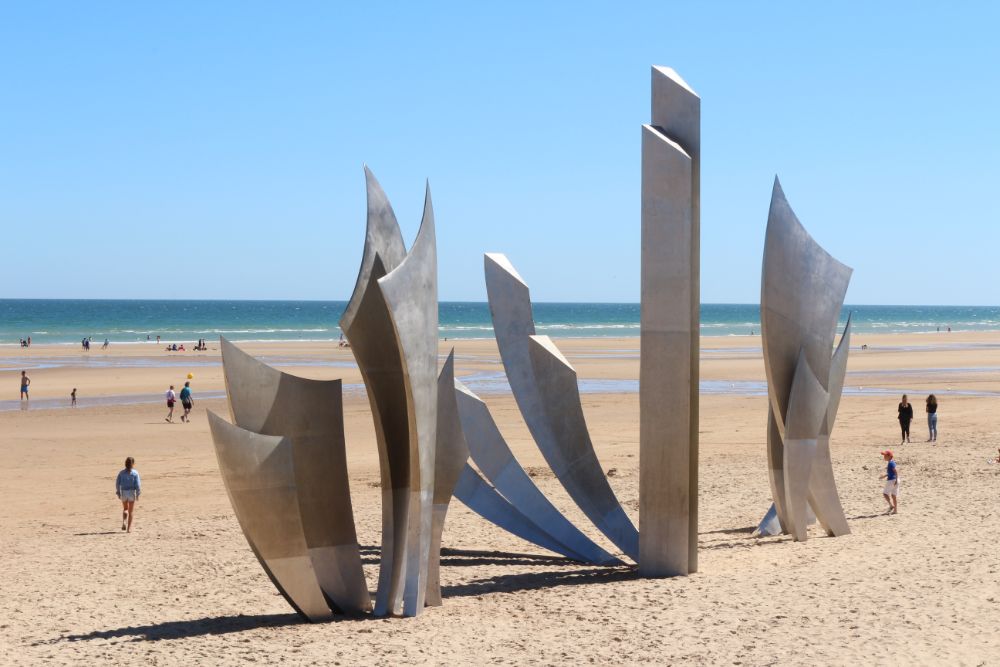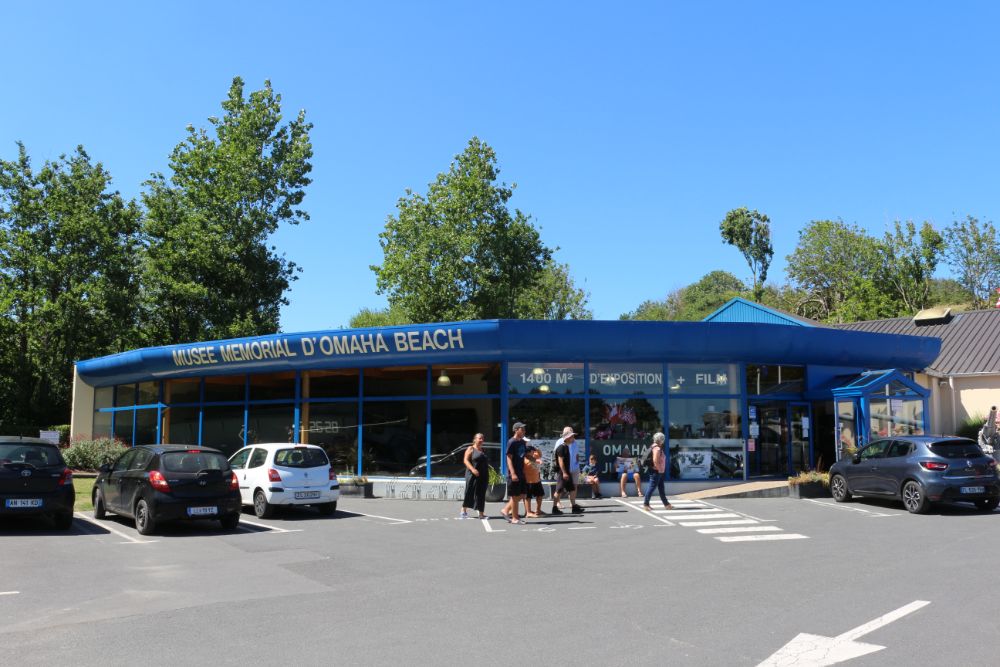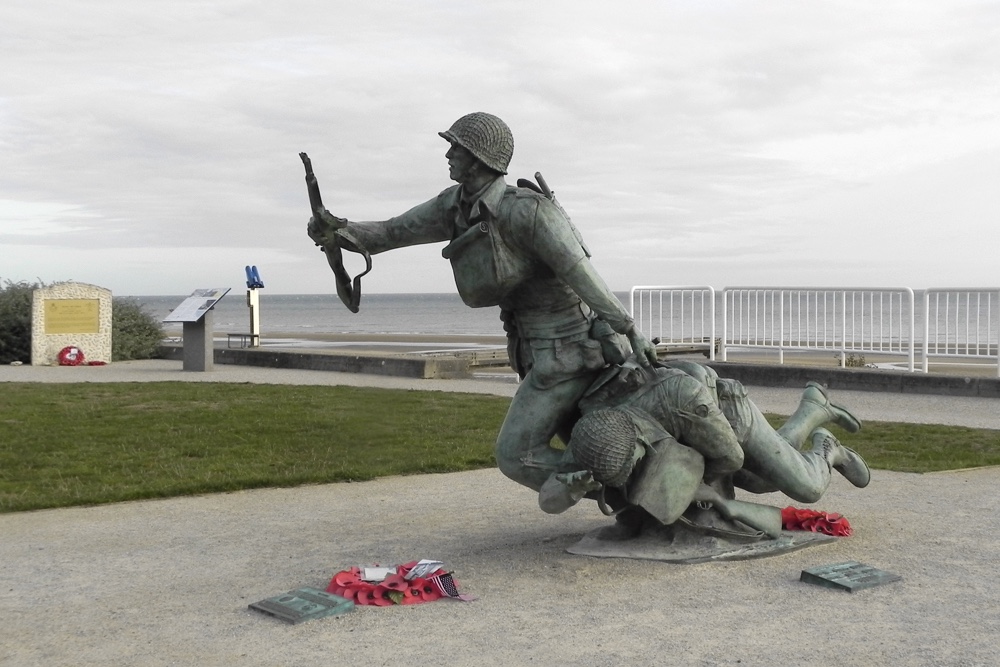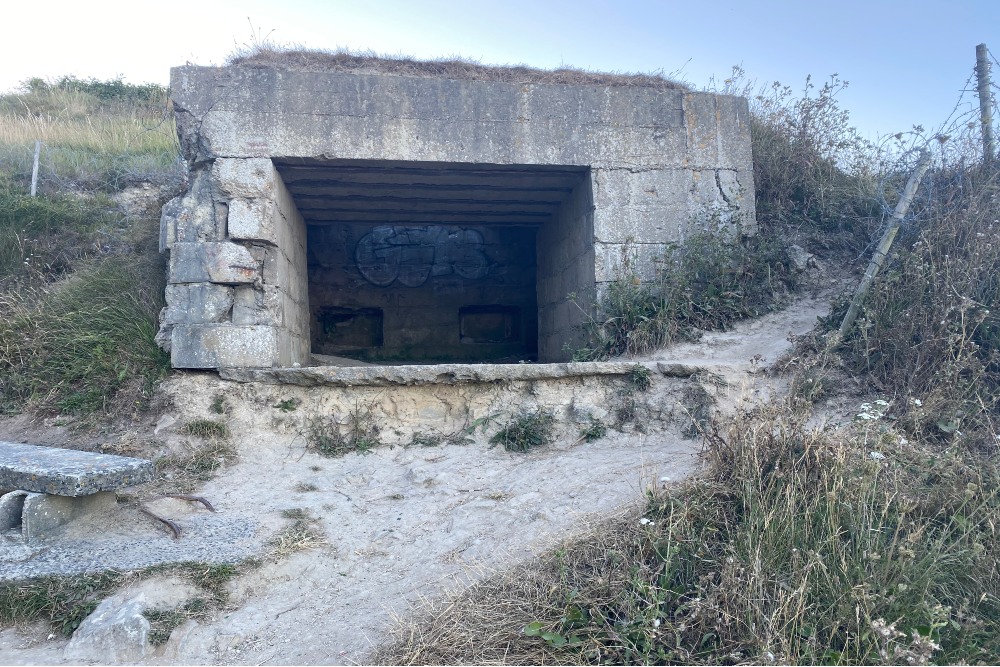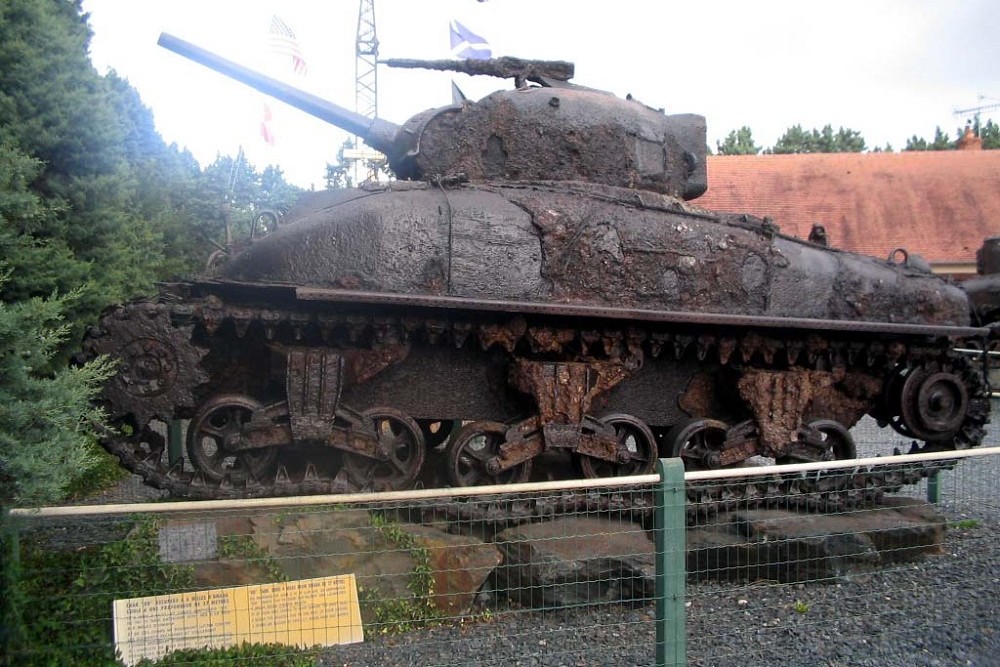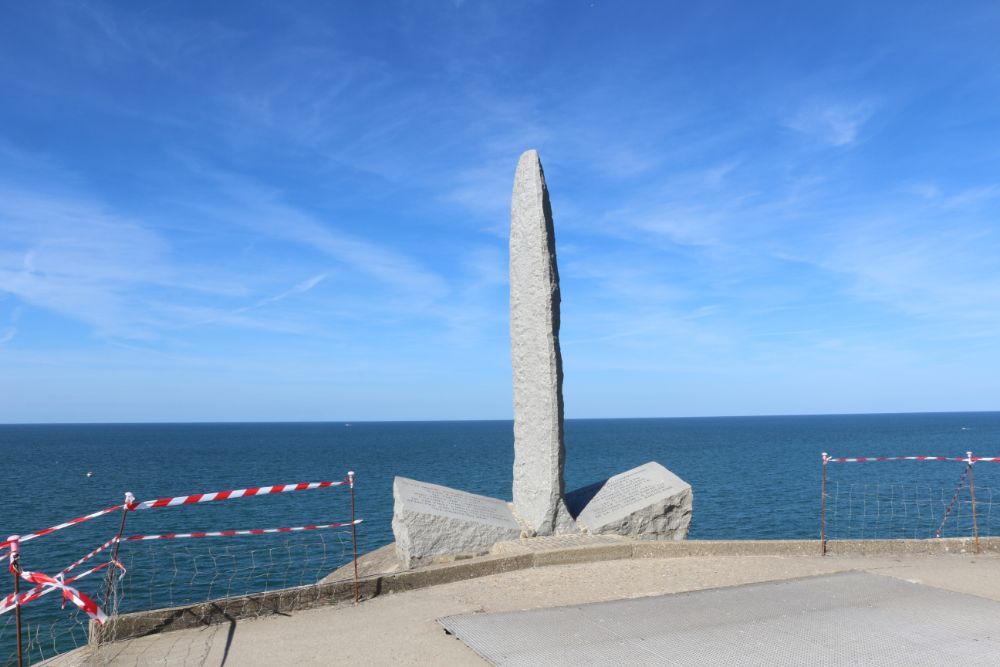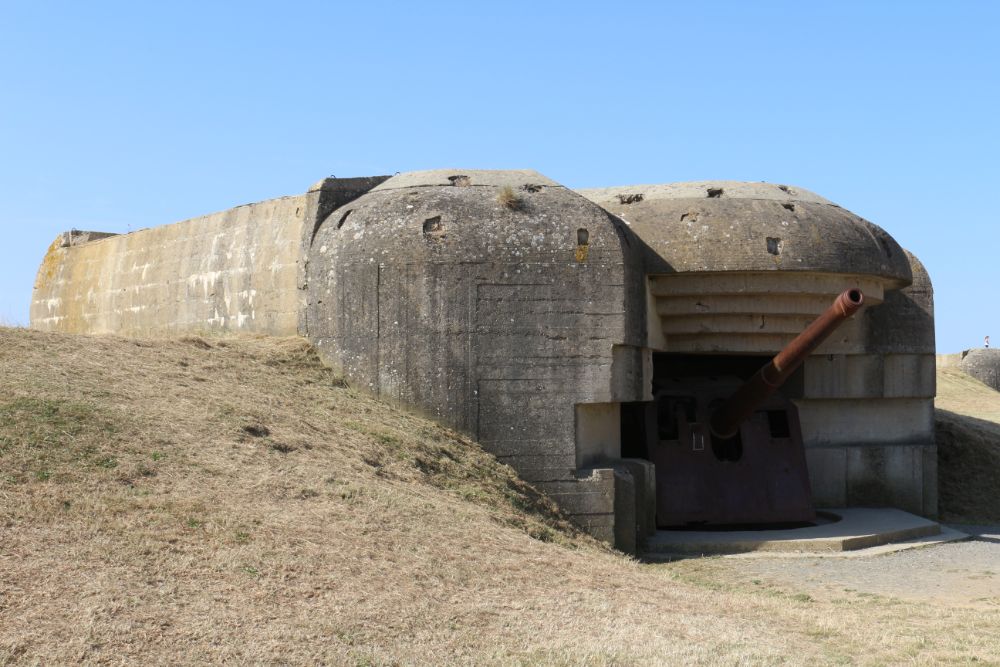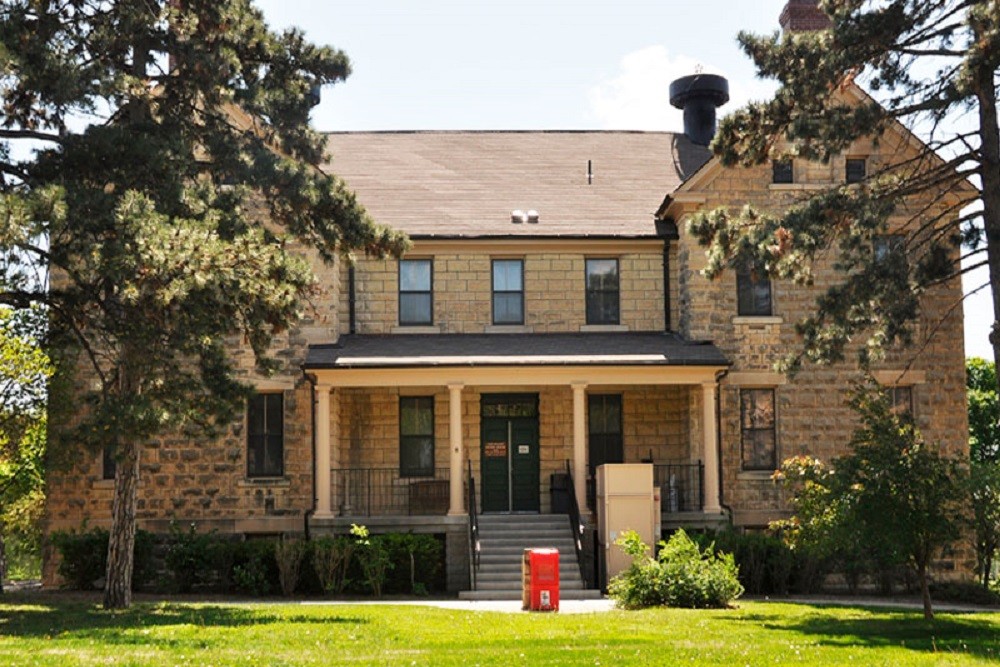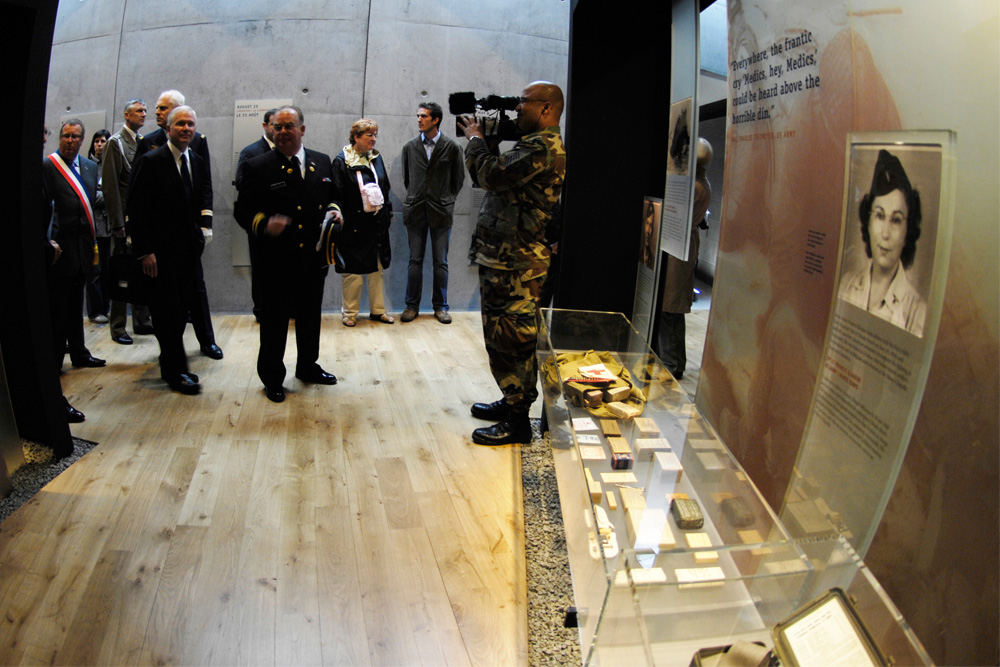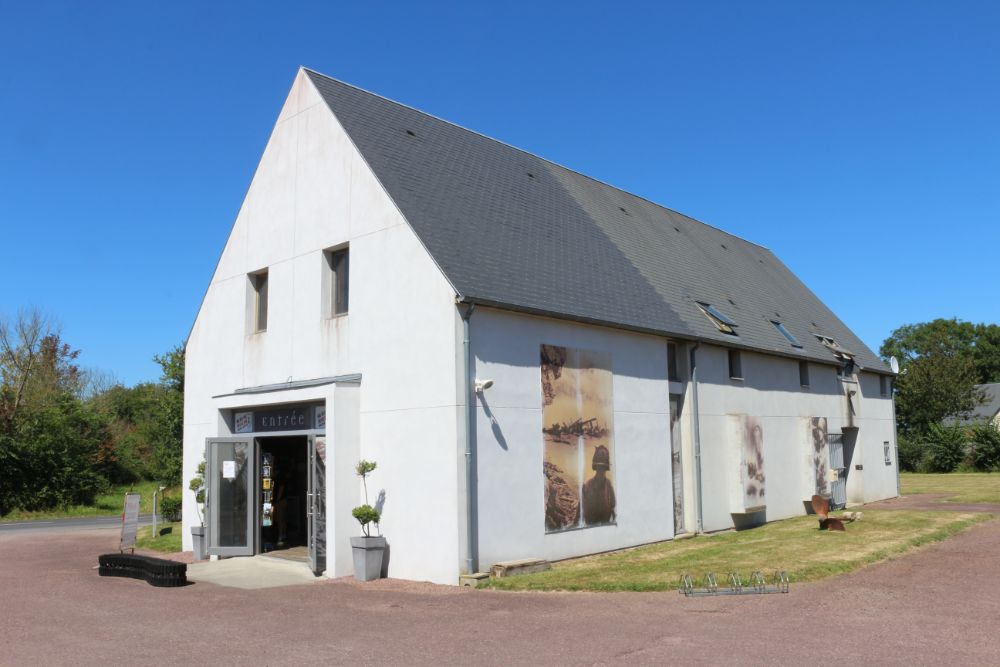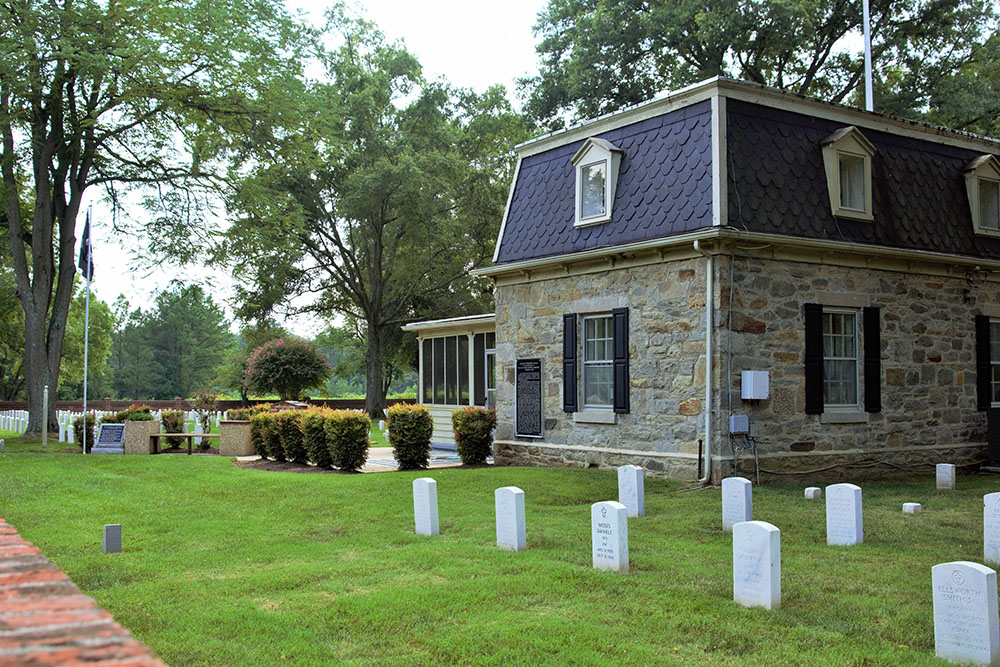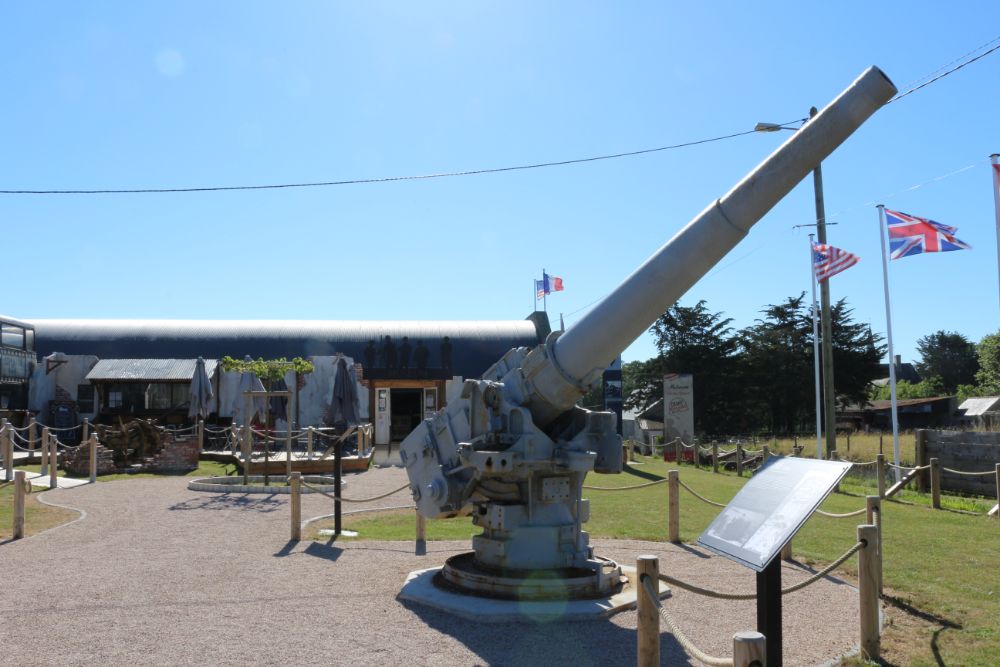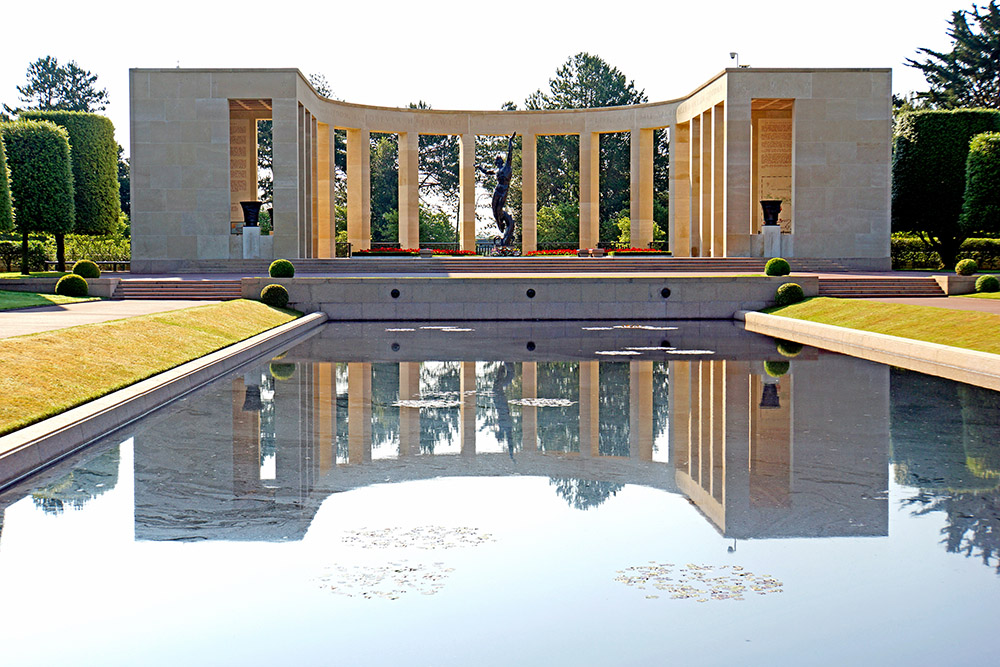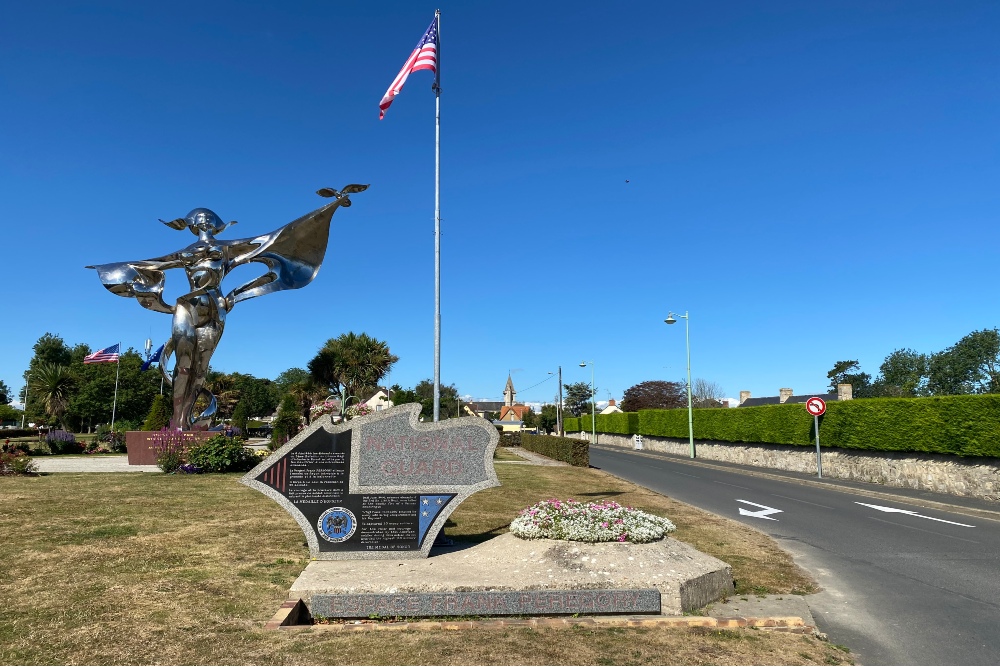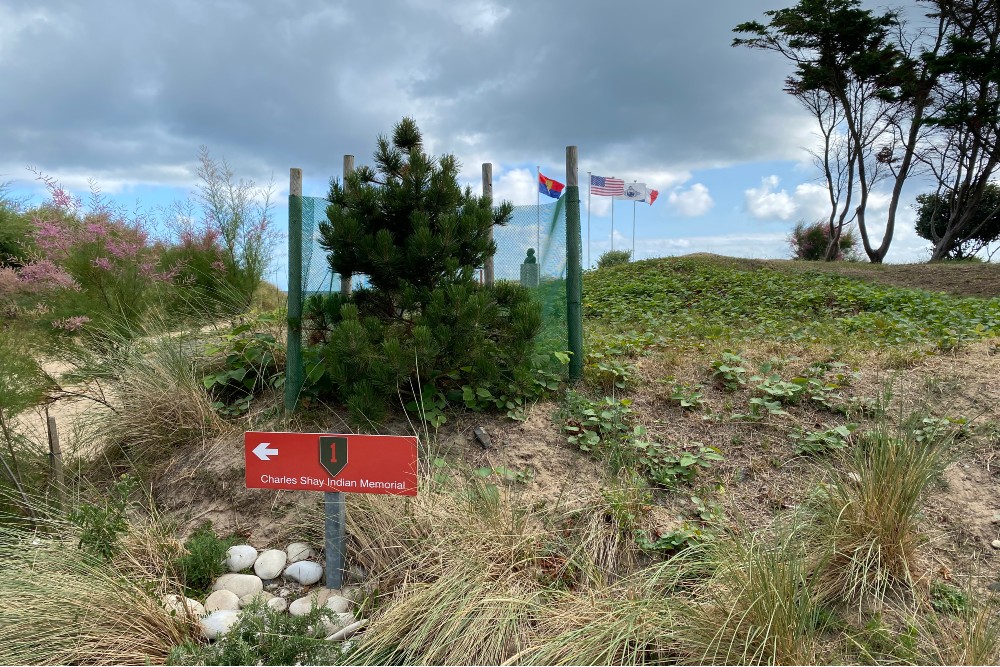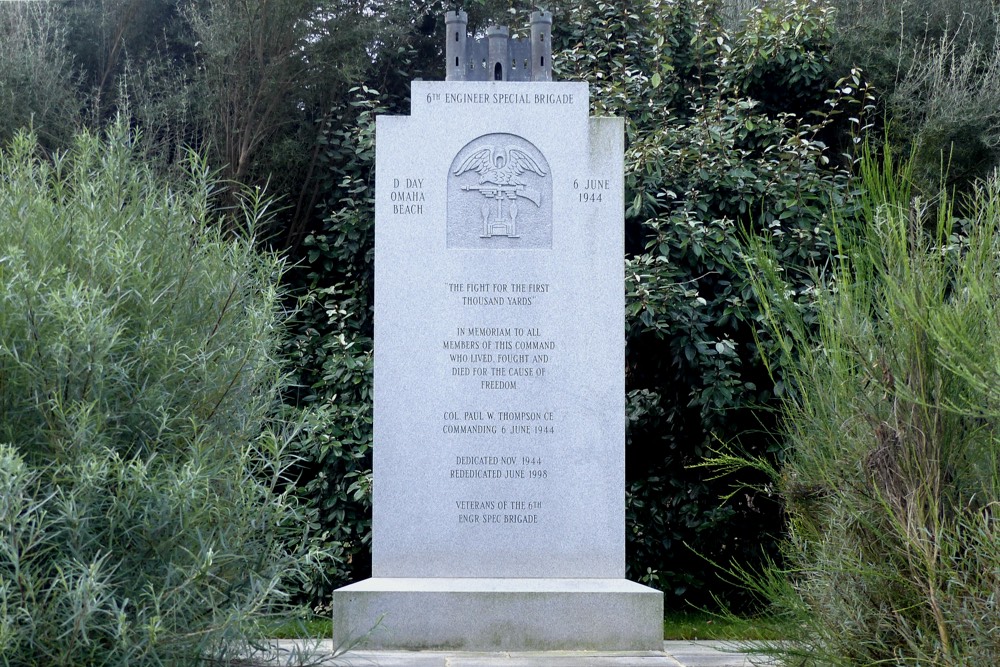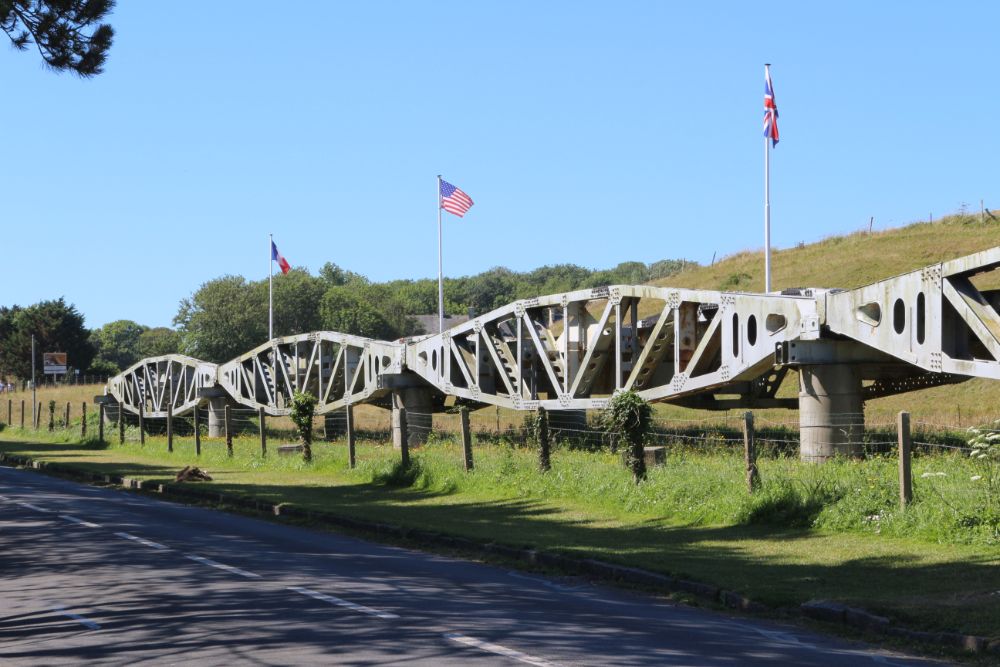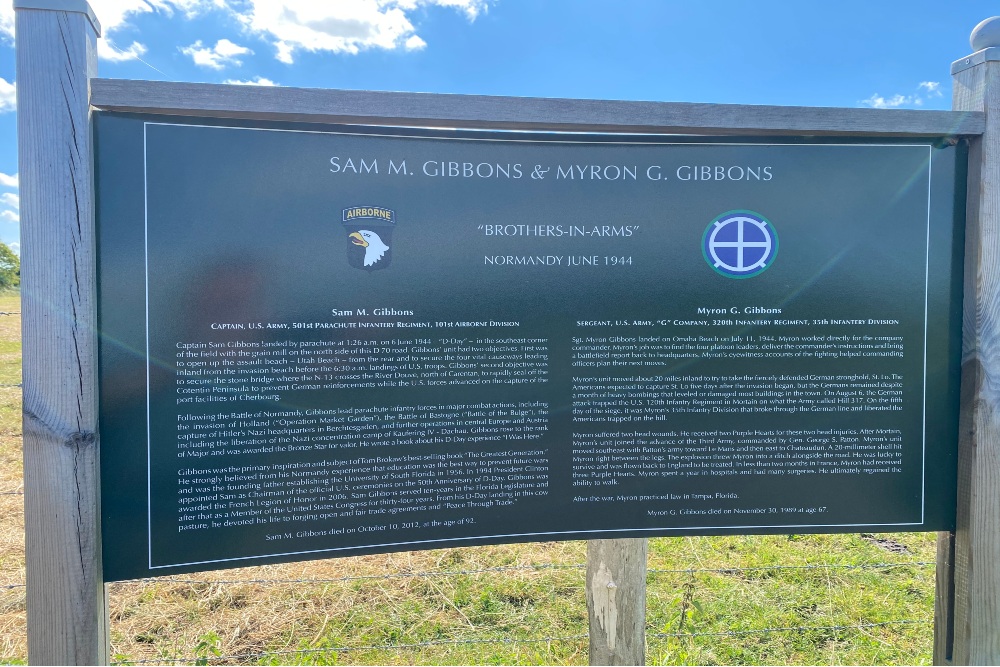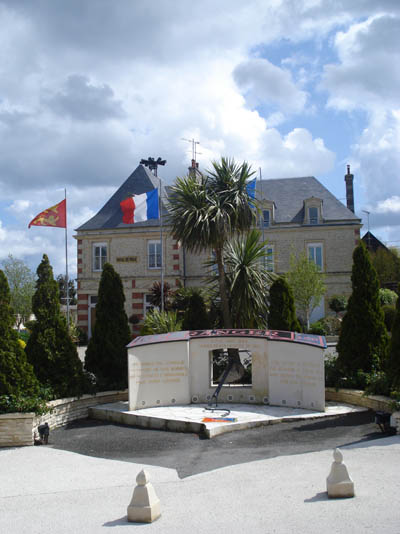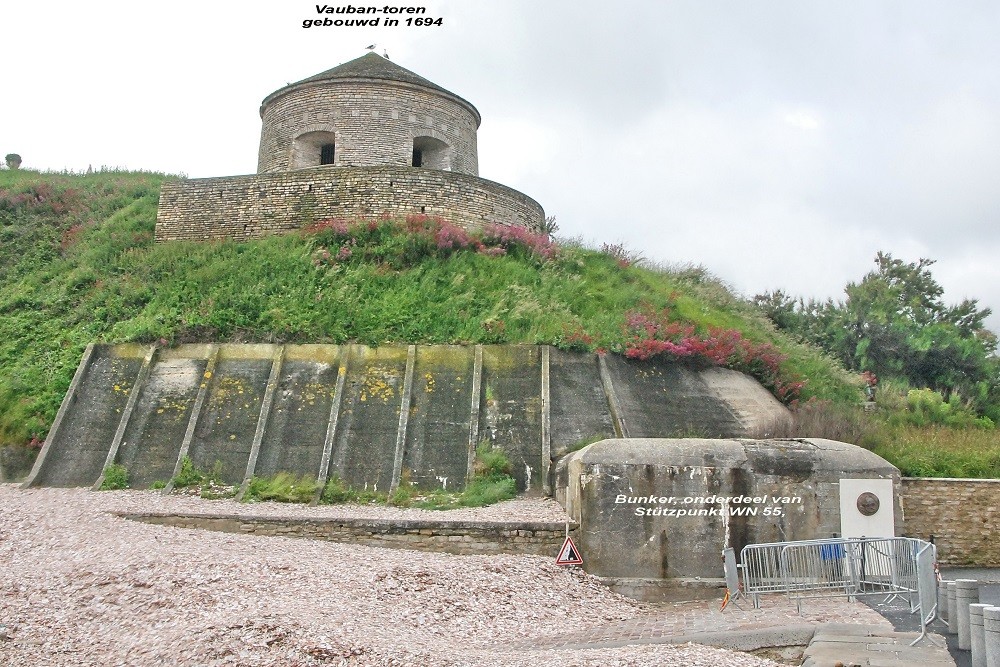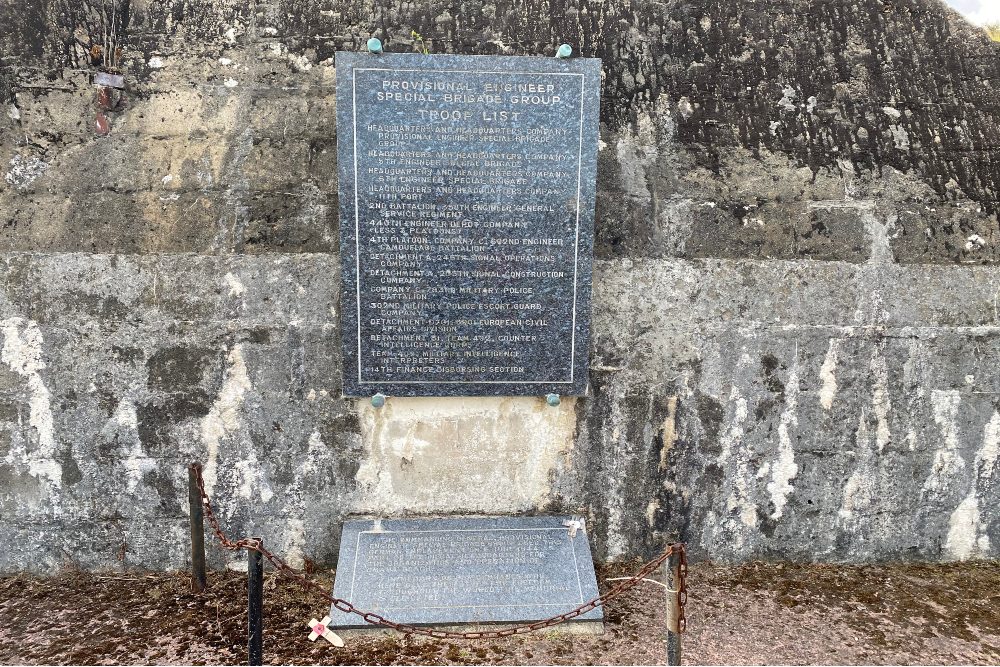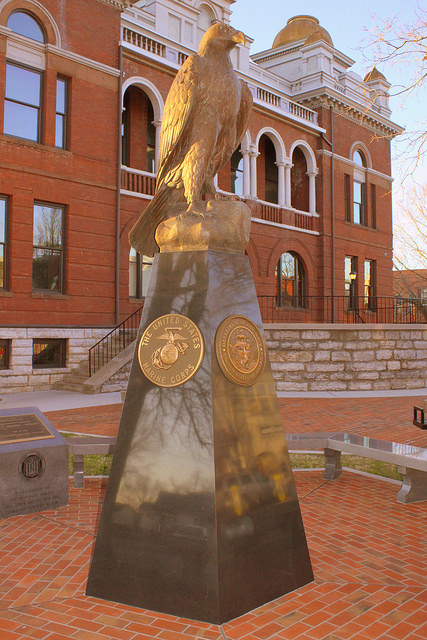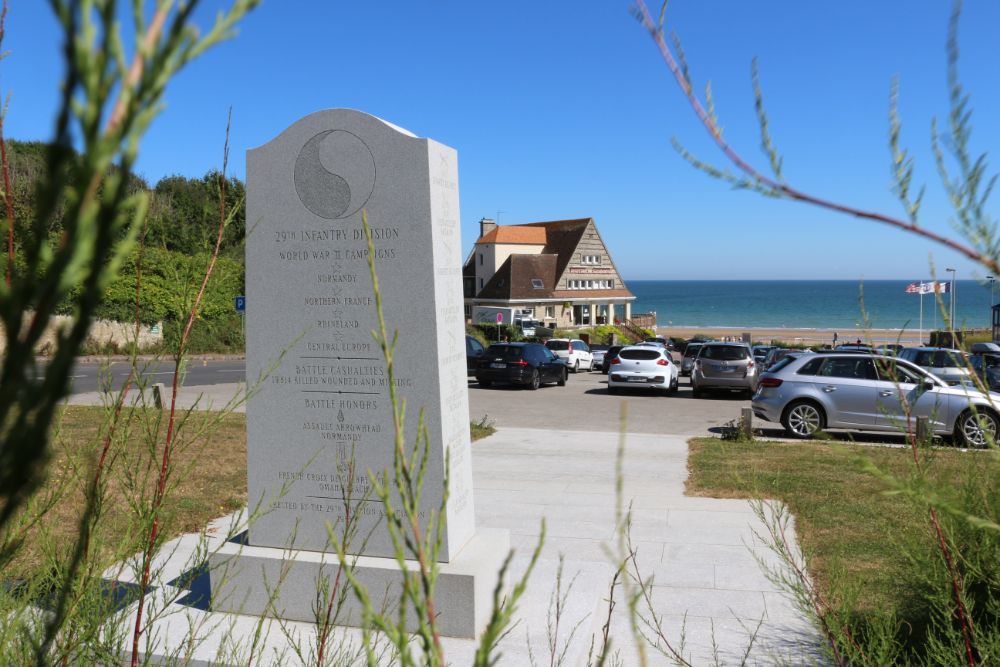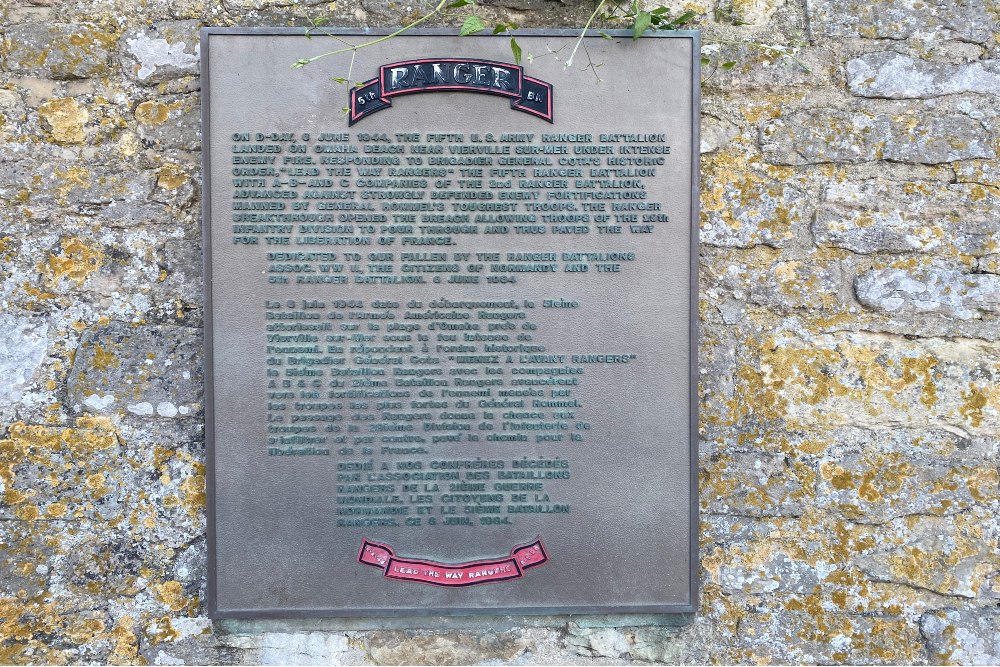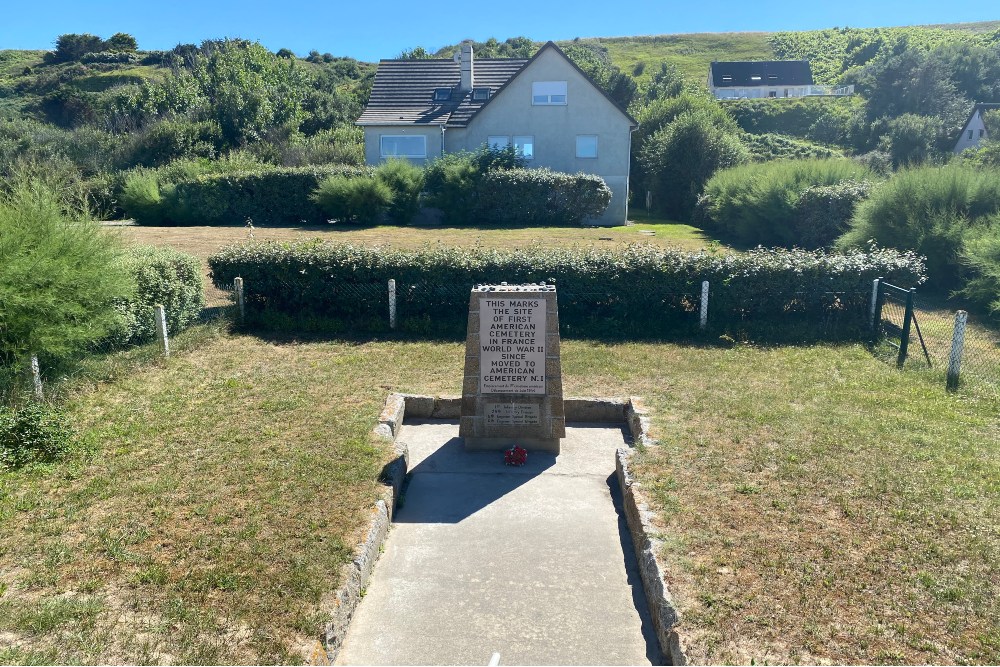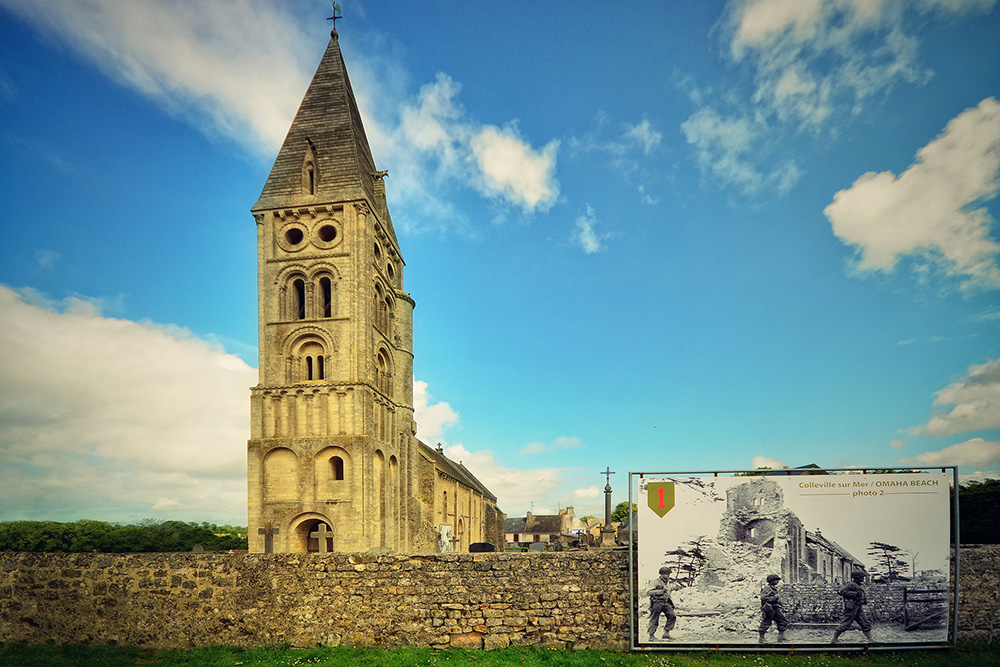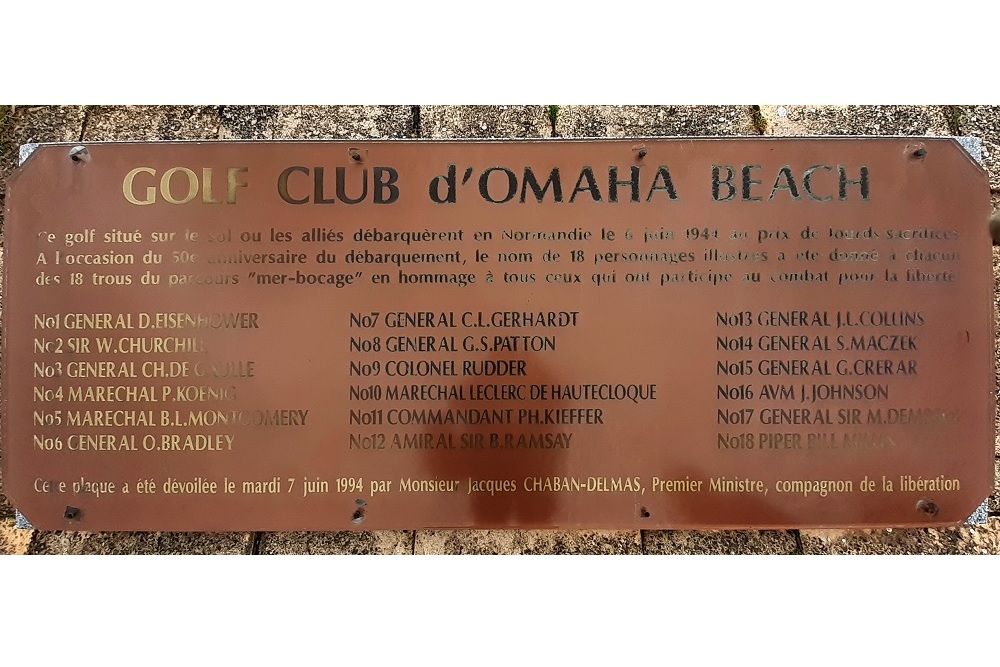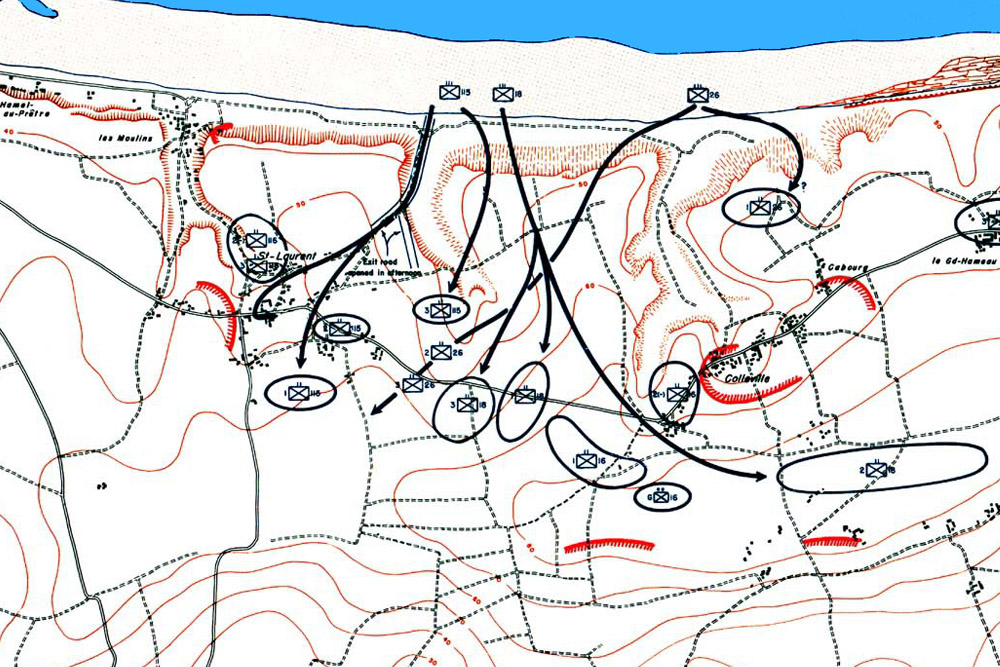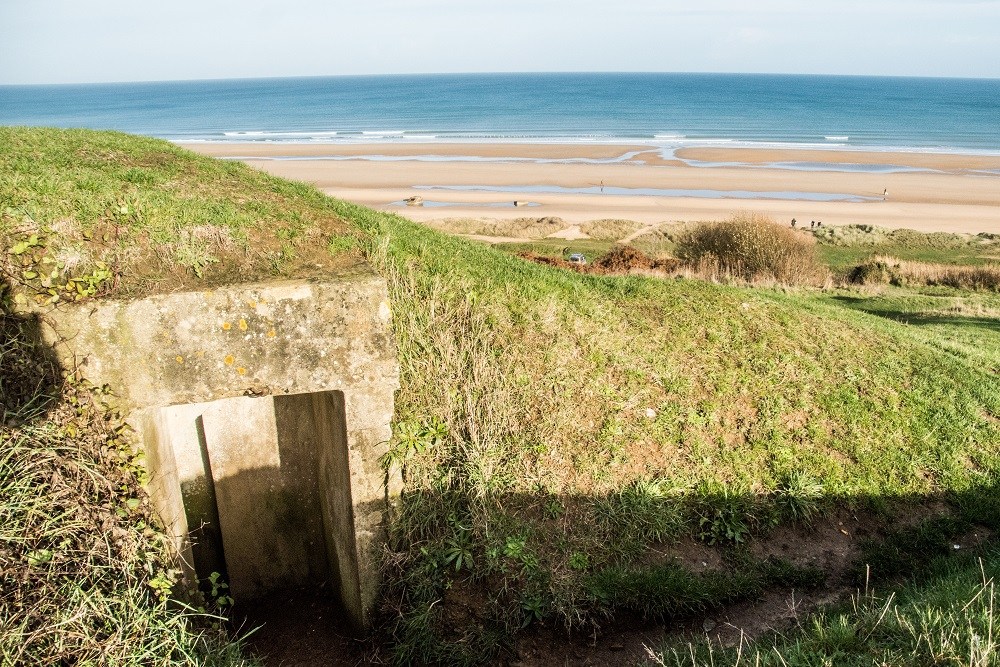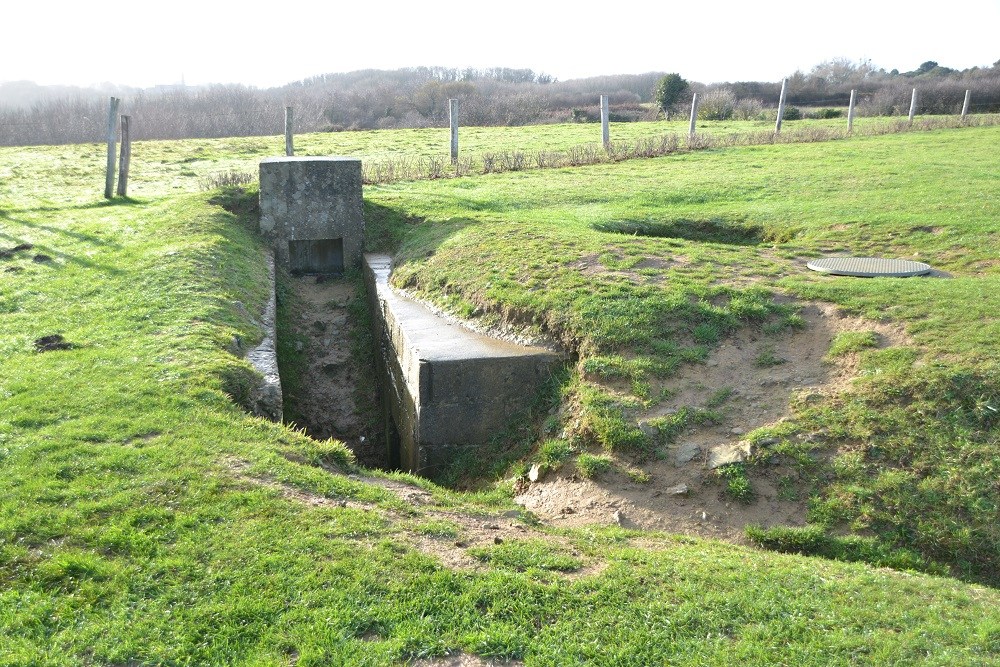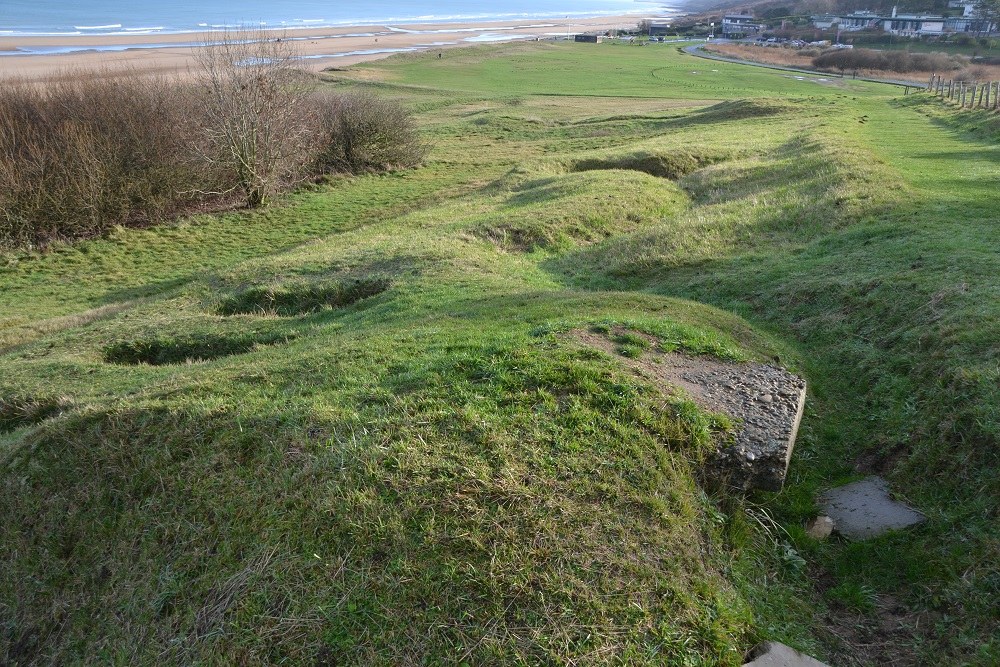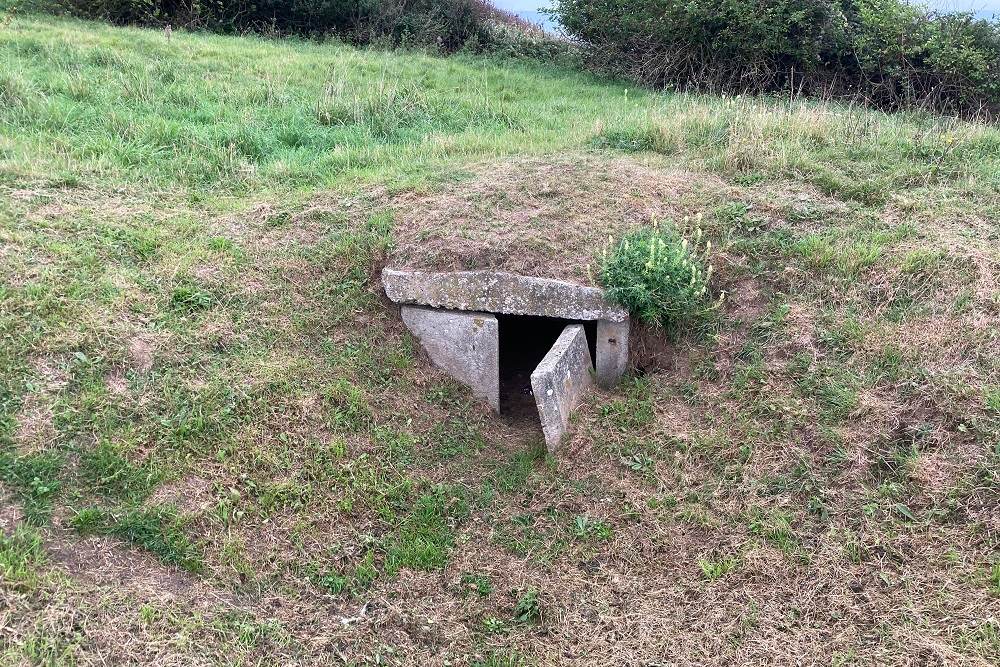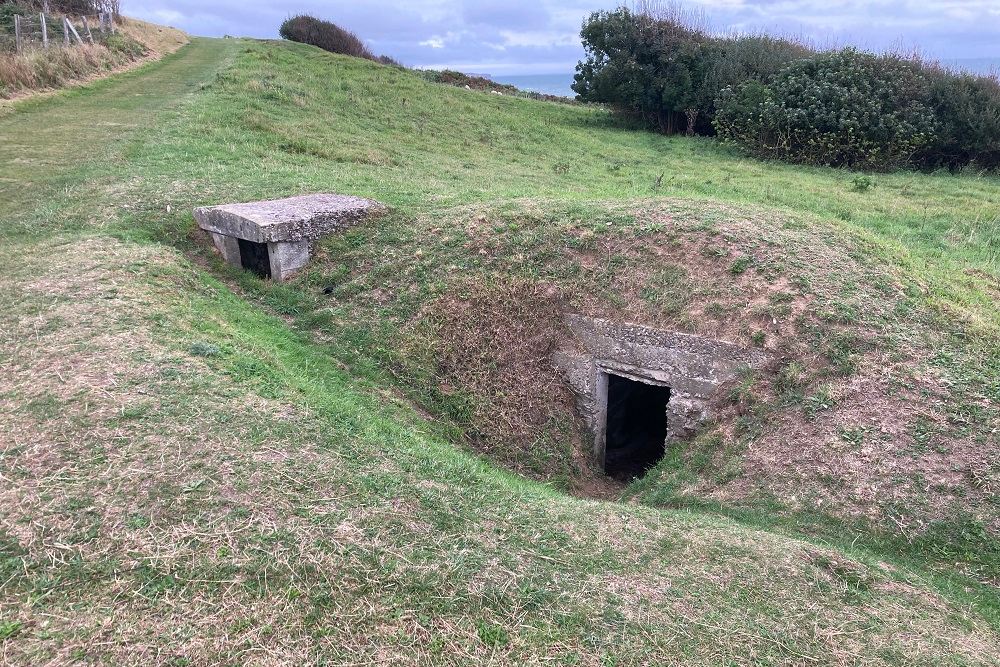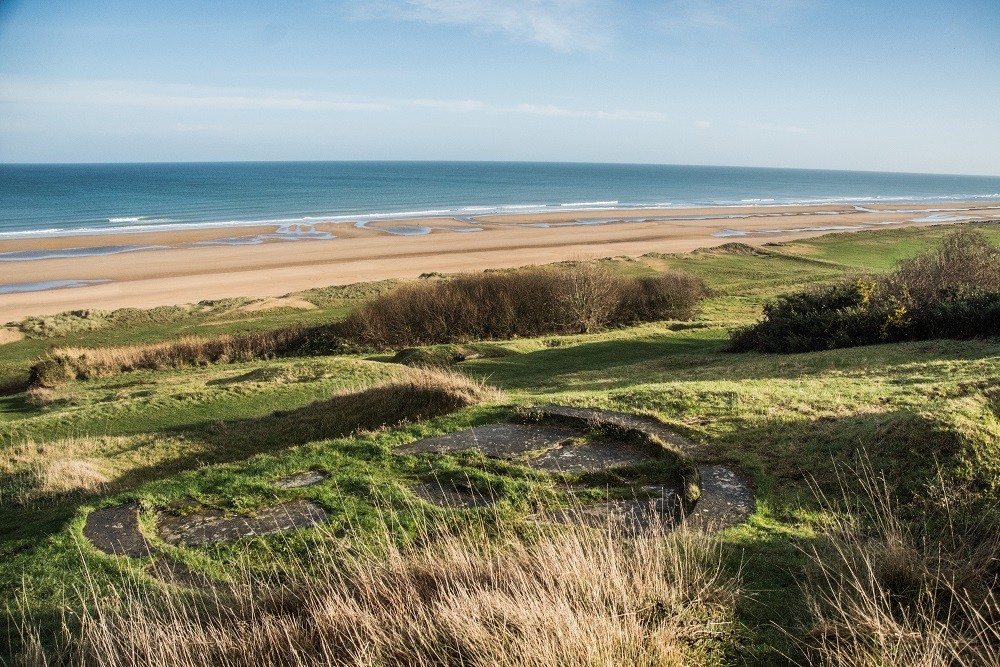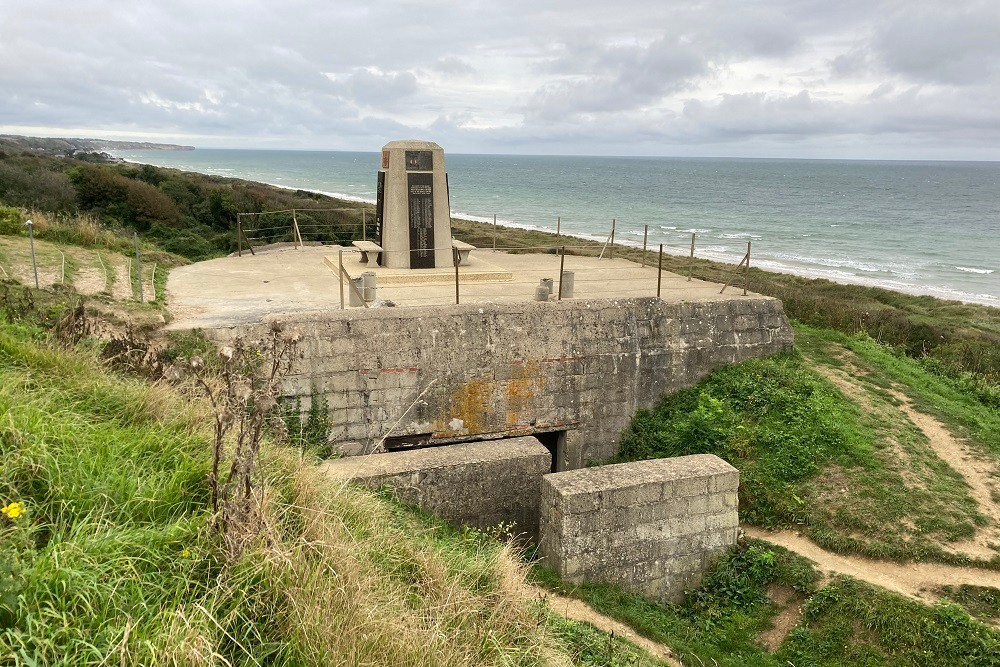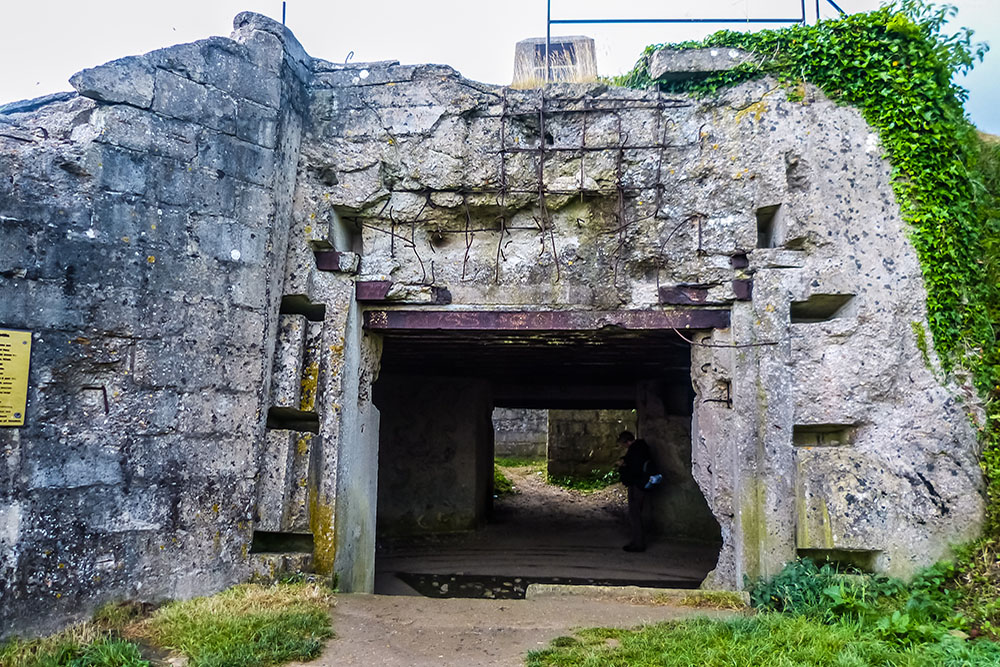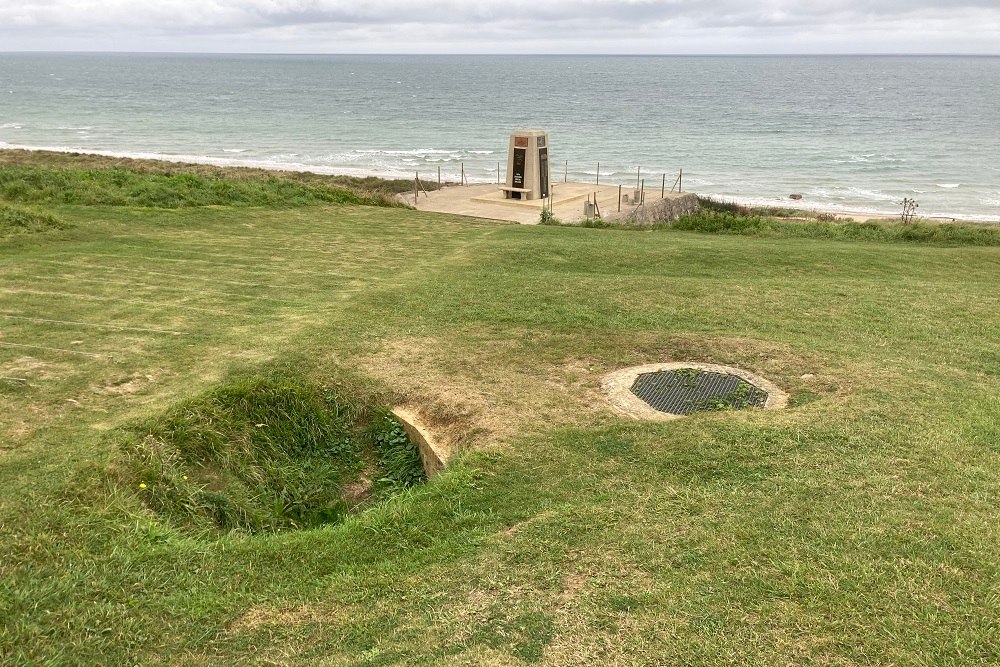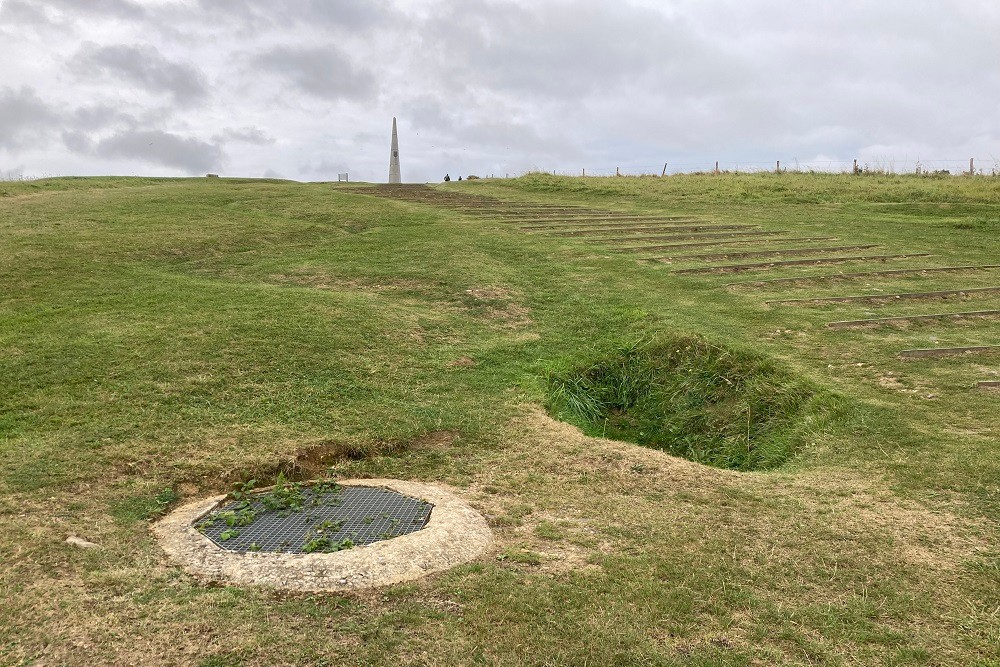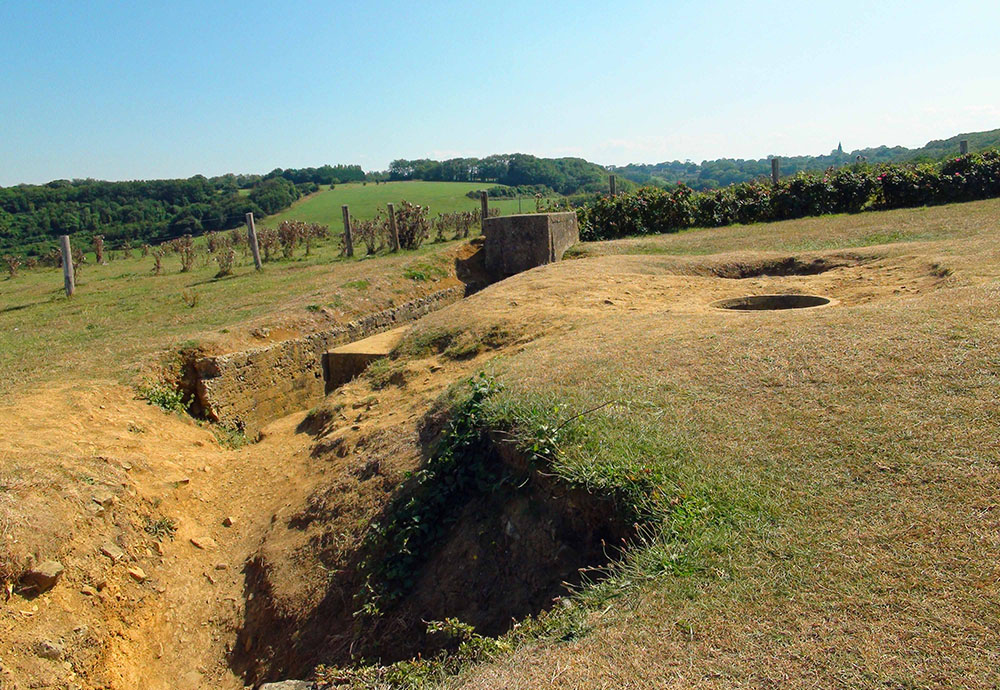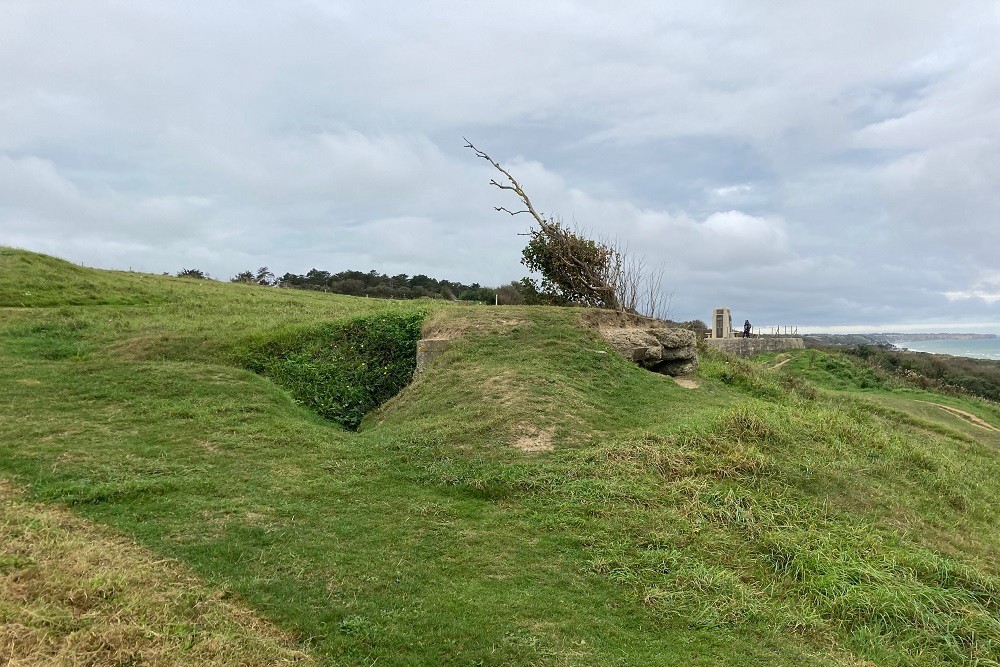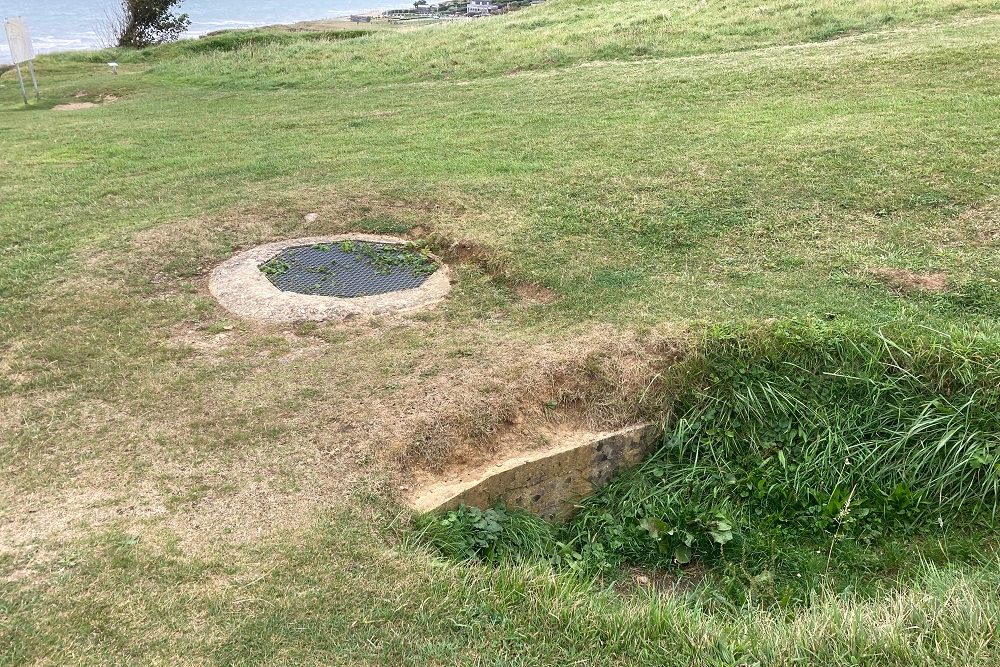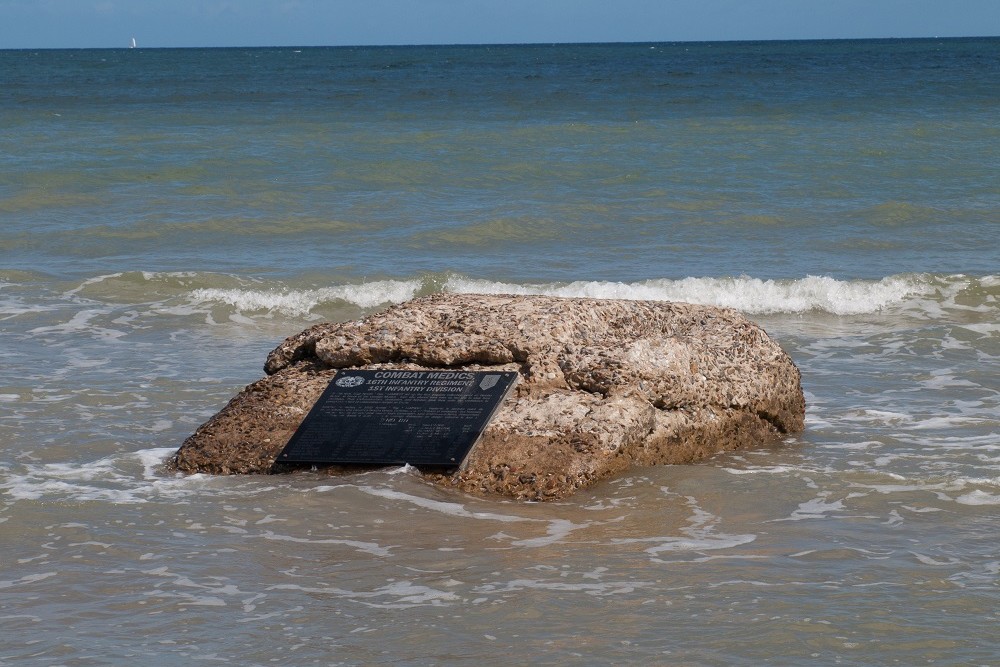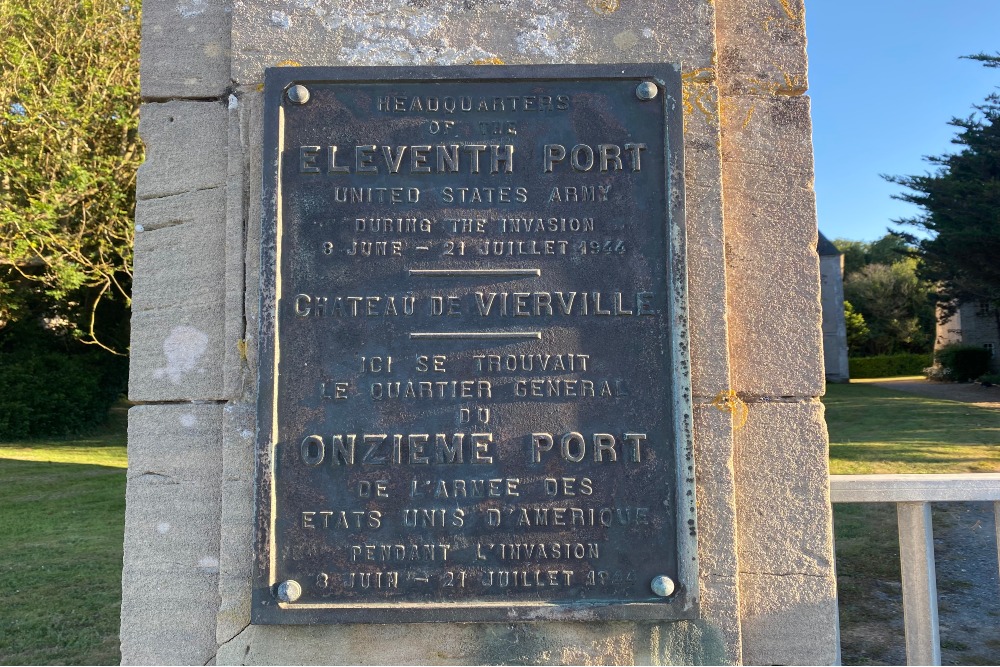Introduction
June 6, 1944 was a very important date for the liberation of Europe. On this day, the largest amphibious landing in the history of the European continent took place, Operation Overlord, when more than 130,000 British, American, and Canadian troops set foot on French soil in Normandy. Their task was to break through Hitler’s Atlantic wall. Operation Overlord claimed the life of thousands of young men and the Third Reich never recovered. The tide definitively turned in favor of the allied forces.
Planning and preparation
Omaha, Nebraska, United States of America is a small town on the river Missouri. "Omaha" became the codename for one of the five allied beach landings during Operation Overlord, the landings on the coast of France occupied by the Germans, on June 6. The American troops which landed on D-Day did so on two beaches on their extreme right: Utah and Omaha. Utah was on the extreme right, Omaha Beach was on the left, and Pointe du Hoc lay between these two American landing sites.
Omaha Beach was a mix of a sand and pebbles and bordered by steep cliffs. The swampy strip of land stretched in front of it followed by sand dunes or a small seawall where the pebble beach was located. During high tide, the water reached all the way to this pebble beach. However, during the low tide, the beach area was extended by a strip of land. This was an isolated and curved beach because the cliffs rose up on both sides and it was not accessible from either side.
Omaha was definitely not an ideal landing place and the planners of the D-Day knew that. However, they also knew that should no troops land in the vicinity of Vierville-sur-Mer, Utah Beach would be left isolated and the gap between Utah Beach and the landing sites of the British and Canadian troops would become too large. If that happened, the chances of the operation being successful would decrease and the landings would be too great a gamble. The landing troops wanted to gain access inland, in order to bring in new troops to fight inland and extend the bridgehead; the axis Isigny-Trêvières-Vaucelles had to be reached by the end of the day. These new troops also had to make contact with troops which landed on Pointe du Hoc. Together with those troops, two Ranger battalions, had to capture or destroy the German battalion in Pointe du Hoc, consisting of six units. The 116th Infantry regiment, which was originally a Virginia National Guard unit that became part of the American 29th Infantry Division, went ashore on the eastern part of Omaha Beach and the 1st Infantry Division went ashore on the western part. Together, these two infantry divisions formed Task Force O. They left from the ports of Weymouth and Portland. In total, around 35,000 soldiers would land on Omaha Beach; this was by far the largest number of soldiers that would land on any of the landing beaches.
The Germans saw the beach between Colleville-sur-Mer and Vierville-sur-Mer as a possible landing site for the Allied invasion, so their coastal defenses were very strong there. The Germans could not have thought of a better place worth defending on the French coast: the battle field was isolated and there was no chance of launching flanking attacks; a frontal attack was the only possibility. Also, there were many natural obstacles which the attackers had to overcome, so the cliffs were an ideal spot to build bunkers, trenches, and other strongpoints. For example, the Germans had established resistance points along the five exits from the beach leading inland. They had about ten of these resistance points at Omaha. Defenders at these resistance points had a great overview of the beach from above because the Germans demolished the houses on the coastal road to improve the view and they planted minefields all around the exits. The stretches of beach that could not be covered by artillery or machinegun fire were defended by remotely controlled flamethrowers. The bunkers with guns of different caliber were spread along the coast.
Various defense positions and strongpoints were also built along the roads leading inland. The roads were blocked by anti-tank walls and ditches. The Germans had various artillery positions that could still cover the beach with their guns further inland.
Barriers were installed on the beach itself. Many densely packed obstacles were constructed between the tide lines, such as Belgian gates with mines lashed to the uprights, steel hedgehogs, barbed wire, Dragon’s teeth, and minefields arranged in belts of 50 yards. The belts themselves were at an approximate distance of 15 yards of each other. The closer one got to the coast, the lower the obstacles became, due to the water levels. There were also tank ditches that were dug on the beach and filled with water
Although Omaha Beach was an almost impregnable fortress, the Allied High Command had four reasons to believe they would successfully land. First of all, the troops manning the defenses on Omaha Beach were weak. They were members of the 716th Infantry division consisting of Poles and Russians. Their training was poor, the division was static, and the morale was very low. However, just before the invasion, the Division was reinforced by the 352 Küstendivision which was, admittedly, one of the best trained units in Normandy.
Secondly, there was to be an aerial bombardment of the beach the night before the landings. This would result in many bunkers being destroyed or severely damaged, making them unusable or only partially usable; the trench systems and other reinforcements would be totally destroyed. The beach and the cliffs were assumed to be full of foxholes that could be used by the attacking troops. However, the bomber formations were hindered by dense clouds in the night between 5 and 6 June. The bombs landed inland or were taken back to England and no bomb had fallen on the reinforcements or on the beach at all.
Thirdly, bombardment from the sea would take place just before the landings. The navy guns and missile launchers would destroy the targets that were unexpectedly missed during the bombing and would deal a final destructive blow to the survivors. However, the firing was very inaccurate and too brief. The large bunkers proved invulnerable to the naval guns and the rockets often ended up in the surf.
The fourth reason was the enormous manpower that would land on Omaha Beach. Approximately 35,000 men and 3,500 vehicles would land on the shore. However, these numbers would not be achieved. In addition, losses also had to be taken into account.
Omaha Beach was divided into the following four sectors from East to West: Fox, Easy, Dog, and Charlie. The sector Dog was subdivided into Green, White, and Red, and sectors Easy and Fox into Green and Red. The 116th Infantry regiment of the 29th Infantry Division landed in the sectors Dog Green, Dog White, Dog Red, and Easy Green. The 1st Infantry Division landed in sectors Easy Red, Fox Green, and Fox Red. Task Force O was the only American armed force that met with the other armed forces in Area Z, the assembly area for the invasion fleet south of Wight.
Definitielijst
- caliber
- The inner diameter of the barrel of a gun, measured at the muzzle. The length of the barrel is often indicated by the number of calibers. This means the barrel of the 15/24 cannon is 24 by 15 cm long.
- D-Day
- The day of the long awaited invasion of western Europe in Normandy, France, 6 June 1944. After a long campaign of deception the allies attacked the coast of Normandy on five beaches to begin their march on Nazi Germany. Often explained as Decision Day, though this is entirely correct. The D stands for Day as generally used in military language. In this case it means an operation beginning on day D at hour H. Hence “Jour J“ in French.
- Infantry
- Foot soldiers of a given army.
- invasion
- Armed incursion.
- Ranger
- American name for a specially trained soldier (similar to commando).
- regiment
- Part of a division. A division divided into a number of regiments. In the army traditionally the name of the major organised unit of one type of weapon.
- resistance
- Resistance against the enemy. Often also with armed resources.
The landings
"At 0550 hrs, a shudder went through the Augusta when she opened fire on targets between the coastal defenses. The shells flew over the fleet and we followed the spots of light on their way to the coast."
This is how Lieutenant General Omar Bradley described the start of D-Day. Bradley stayed aboard the cruiser U.S.S. Augusta, the invasion flagship, which was off the coast of Omaha Beach and opened fire. The rest of the fleet also opened fire. The guns and rocket launchers had yet to destroy the targets that had remained undamaged from the bombing. The bombing from the sea was far too brief and inaccurate as described already and many German reinforcements and bunkers were only slightly damaged or left completely unscathed.
Before the first men would go ashore, the DD tanks with an inflatable floatation collar that allowed them to "swim" went in first. They had to be the first to arrive on the beach for two reasons. First of all, they had to provide the infantry with the necessary armored support. Should the infantry come ashore earlier than the tanks, they would miss that support. The very action was meant to serve as a mental blow to the German defenders because the sight of swimming tanks had to be paralyzing. However, Rear Admiral J.L. Hall, US Navy ordered the tanks to be launched too far from the coast. Hall did this to keep his ships out of range of the German artillery. However, the Allied intelligence service had not realized that the German guns had been arranged in such a way that they could primarily attack the coast, not the sea. Launching the tanks at a great distance was an unnecessary gamble and it failed. This far from the coast, the lateral currents were too strong and the waves were too high for the tanks: 27 of them sank before they could reach the beach. As a result, the infantry largely missed their armored support. On the other beaches where DD tanks were used, Utah and Juno, they were launched much closer to the coast; not a single DD tank was lost on Utah and only two on Juno.
The main infantry attack on Omaha Beach had to be carried out by the 1st Infantry Division, commanded by General Major Clarence Huebner. The attack was supported by the 116th Infantry Regiment of the 29th Infantry Division. These troops landed on the right flank. The start was made at 0630 hrs with the landings of the infantry. The soldiers who were part of the first landing wave, the 16th Infantry Regiment of the 1st Infantry Division and the regiment of the 29th Infantry Division, were met with an onslaught. The Germans had recovered from the air and the sea bombing and had manned their defensive positions from which they could ruthlessly attack the landing craft. The infantry had to make do without the supporting fire of the DD tanks and was ineffective. It was planned approximately 40,000 troops would go ashore, but only 5,000 had landed at 0830 hrs and many landed in the wrong place. Many soldiers who went ashore were killed or injured. The soldiers who were still able to fight were so small in number that they had not been able to clear the exits between the steep cliffs although they should have done so the first hour after the landings. They had gathered at the seawall where they were out of reach of the German fire. However, there were no officers and nobody took any initiative to attack the German positions. The beach was littered with corpses, wounded, equipment, and broken landing craft.
In the meantime, due to the rising tide, the beach was getting narrower and narrower. Landings planned after 0830 hrs had be postponed simply because of shortage of beach space. Bradley had difficulty following the landings from the cruiser Augusta. The ships’ crew had a poor visibility because of all the smoke and because many radios had been lost during the landing. The latter also made it difficult to sketch a picture of the situation through this communication channel. However, it was clear to Bradley that the landings were not going as planned and that the situation was extremely critical. He considered moving the remainder of his forces from Omaha to Utah and British Gold Beach.
Meanwhile, 11 destroyers from Bombarding Force C approached the coast as close as they could. Their bombing just before the landings had been too brief and inaccurate. Now, they shelled German bunkers and reinforced positions once again. They were supported by some DD-tanks which had not sunk. These tanks had come ashore while the first wave of infantry was largely eliminated. They were also eliminated fairly quickly, but their guns were still functioning. This firing had more effect than the firing just before the landings; some German positions were eliminated. A few soldiers from the 16th and 116th Infantry Regiment who were behind the seawall recovered and regained their courage. Individually and in small groups, they began to climb the cliffs blocked by the Germans. They had crawled over the seawall, through the barbed wire, and over the cliffs behind it.
By noon, more and more soldiers and small groups had reached the top where they formed larger groups. They started attacking German coastal defenses and positions from the rear. Now that they were being also attacked from the rear, the Germans had to divide their attention. They somewhat weakened the fire aimed at the beach all morning which gave more and more American soldiers the chance to climb the cliffs and reach the top. All this encouraged Bradley to resume the landings. Although these remnants of the infantry regiments that had already landed, still suffered losses, these were much fewer than those during the first landing wave. The local defense units, such as 716th Infantry division, turned out to be static, as predicted by the Allied intelligence service. This division, largely composed of Poles and Russians, was unable to withdraw quickly and those who did not die during the fighting fell were taken prisoner of war by the Americans. Meanwhile, the German artillery slowly ran out of ammunition. They claimed many victims during the morning.
The men of the 2nd battalion of the American Rangers were among the first troops landing on Omaha Beach. They landed on the most eastern part of Omaha Beach. This was their starting position inland to attack German defenders on Pointe du Hoc in the rear. Half of the battalion landed next to the 116th Infantry regiment of 29th Infantry Division. One Ranger company, together with the men of the 29th Infantry Division, went inland and two other companies had to remain in reserve. The Ranger company was almost completely eliminated by German fire during the first wave of attacks. The other two companies got isolated, but later managed to unite with the other Rangers at the bottom of the cliff at Pointe du Hoc.
More and more groups of Americans had moved inland in the afternoon. They captured the village Vierville-sur-Mer. This was a village on the coast giving a view of the exit from the Omaha Beach that the Allied Forces intended for vehicles. The vehicles that landed during the subsequent waves of landings could leave the beach through this exit and take part in inland fighting. Finally, the infantry got some motorized and armored fire support. Inland, the first American infantrymen encountered the units of the 352nd Infanterie-Division. Soldiers from this unit, who came as a surprise to American infantrymen because the Allied intelligence service had overlooked their presence, made full use of the opportunities that the landscape offered them as defenders. The area behind Omaha Beach consisted of small meadows that were surrounded by thick hedges and hollow roads between them. This Normandy landscape or bocage offered many advantages for the defenders. The Americans reached the village of St-Laurent-sur-Mer, but their advance came to a halt during the evening. Colleville-sur-Mer, a village to the east, while already partially captured by infantrymen, was heavily bombarded by warships that were under the assumption that the village was still entirely in German hands. This misunderstanding was a result of the fact that many radios had been lost during the landings. The bombardment of the village claimed many Americans lives by "friendly fire." The fighting in the village came to an impasse during the night. However, by that time, the divisions landed, including the divisions staff officers.
Less than half the number of troops of the 1st and 29th Infantry Division had landed on June 6. Of the 35,000 men available, only approximately 15,000 arrived at the coast. Around 2,400 Americans were killed, wounded, or captured by the Germans. The losses suffered on Omaha Beach were higher than anywhere else in the invasion area.
The German 716th Infantry Division was almost completely put out of action during the D-day. The losses of the 352nd Infantry Division, however, were more than half of the American losses. The Germans lost about 1,100 men. However, for the Germans, this meant a loss of 20% of their combat strength, and for the Allies this loss was only 7%. The 20,000 men of the 1st and 29th Infantry Division who were still on board were ready to go ashore in the morning of June 7 and offer reinforcements.
Definitielijst
- cruiser
- A fast warship with 8,000 – 15,000 ton displacement, capable to perform multiple tasks such as reconnaissance, anti-aircraft defence and convoy protection.
- D-Day
- The day of the long awaited invasion of western Europe in Normandy, France, 6 June 1944. After a long campaign of deception the allies attacked the coast of Normandy on five beaches to begin their march on Nazi Germany. Often explained as Decision Day, though this is entirely correct. The D stands for Day as generally used in military language. In this case it means an operation beginning on day D at hour H. Hence “Jour J“ in French.
- infantry
- Foot soldiers of a given army.
- invasion
- Armed incursion.
- Ranger
- American name for a specially trained soldier (similar to commando).
- Regiment
- Part of a division. A division divided into a number of regiments. In the army traditionally the name of the major organised unit of one type of weapon.
- rocket
- A projectile propelled by a rearward facing series of explosions.
After the landings
On June 7, the situation on Omaha Beach was still critical. American troops could make little progress because they were still under fire from automatic weapons of different caliber. In the course of the day, the German 352nd Küstendivision offered less and less resistance. They were exhausted by the heavy fighting on June 6 but did not receive reinforcements. The Americans, on the other hand, did receive reinforcements. More than half of the US force had to come ashore on June 7. Gradually, the Americans gained the upper hand. This gave them the opportunity to force small breakthroughs. Reconnaissance patrols made initial contact with British troops near Port-en-Bessin in the east. The villages in which the fighting had ended in an impasse the previous evening were finally captured by the Americans. The original goals had not yet been achieved, but the Americans had finally landed on Omaha; the landings were successful.
The interior behind Omaha Beach, just like the beach itself, turned out not to be an ideal place for attack against the enemy. Americans had great difficulty making progress in the dense hedge landscape. Time and again they ran into snipers, machine gun positions, or other small resistance spots that were difficult to eliminate in such a landscape. In the evening of June 8, the American bridgehead at Omaha Beach had reached a depth of about 6.2 miles. The British and American forces could have established a definitive connection between their sectors to the west of the city of Bayeux. Bayeux was taken intact by the British on June 7. However, the American troops that landed at Omaha on June 6 had still not been able to reach the Isigny-Trêvières-Vaucelles line. As a result, a connection between the bridgeheads of Utah and Omaha Beach was far from being established. There was a threat that the Germans would counterattack and settle between the bridgeheads of Utah and Omaha. This would mean that the bridgehead at Utah Beach would become isolated from other Allied bridgeheads and possibly even be destroyed. That would be a serious threat to the Allied campaign in Normandy.
To prevent the Germans from attempting to isolate the Utah Beach bridgehead, Eisenhower and Bradley’s units of the American 5th Army Corps decided on June 9 to make an attempt to establish the connection. Isigny was captured on June 9 and the forest of Cerisy was taken on June 10. Meanwhile, the American 101st Airborne Division had succeeded in taking Carentan and establishing contact with the 29th Infantry Division of Omaha Beach. On June 11, the line that the allied planners had in mind for June 6 was finally reached, not by the units that should have reached that line in the original plans, but by units of the American 5th Army Corps. It was not until June 18 that the American bridgeheads were so well connected and firmly in the hands of the Americans that Eisenhower and Bradley could focus on upcoming actions, such as strengthening the Carentan’s bridgehead and the heights of St-Lô to advance in the direction of Cherbourg.
Definitielijst
- caliber
- The inner diameter of the barrel of a gun, measured at the muzzle. The length of the barrel is often indicated by the number of calibers. This means the barrel of the 15/24 cannon is 24 by 15 cm long.
- Infantry
- Foot soldiers of a given army.
- machine gun
- Machine gun, an automatic heavy quick firearm.
- resistance
- Resistance against the enemy. Often also with armed resources.
Information
- Article by:
- Pieter Schlebaum
- Translated by:
- Besmir Fidahic
- Published on:
- 20-01-2020
- Last edit on:
- 30-09-2024
- Feedback?
- Send it!
Related sights
Related books
Sources
- AMBROSE, S.E., D-Day, 6 juni 1944, BZZTôH, 's-Gravenhage, 2003.
- BALKOSKI, J., Omaha Beach.
- COLLIER, R., D-day, The Orion Publishing Group, London, 2002.
- FOWLER, W., D-day, Zuidnederlandse Uitgeverij N.V., Aartselaar, 2004.
- HOLMES, R., D-day, Kosmos-Z&K Uitgevers, Utrecht, 2004.
- VAT, VAN DER, DAN, D-Day, Lannoo, Tielt, 2003.
